List of minor third-party universes: Difference between revisions
m (→Getsu Fuma Den) |
BubzieBobkat (talk | contribs) m (→River City) |
||
| (138 intermediate revisions by 44 users not shown) | |||
| Line 30: | Line 30: | ||
|latestinstallment = ''[[wikipedia:Bakutotsu Kijūtei|Bakutotsu Kijūtei: Baraduke II]]'' (1988) {{flag|Japan}} | |latestinstallment = ''[[wikipedia:Bakutotsu Kijūtei|Bakutotsu Kijūtei: Baraduke II]]'' (1988) {{flag|Japan}} | ||
}} | }} | ||
'''''Baraduke''''' ({{ja|バラデューク|Baradyūku}}, ''Baraduke''), originally known as '''''Alien Sector''''' outside of Japan, is a series of scrolling shooters that feature an astronaut rescuing docile aliens from hostile species. Although it was released a year earlier, the original game is noted for its similarities to | '''''Baraduke''''' ({{ja|バラデューク|Baradyūku}}, ''Baraduke''), originally known as '''''Alien Sector''''' outside of Japan, is a series of scrolling shooters that feature an astronaut rescuing docile aliens from hostile species. Although it was released a year earlier, the original game is noted for its similarities to {{uv|Metroid}}; the player character, Kissy, is revealed to be a woman upon clearing the game. A friendly alien, Paccet, cameos in Namco Roulette. | ||
{{clr}} | {{clr}} | ||
| Line 38: | Line 38: | ||
|image = [[File:Baten Kaitos logo.jpg|250px]] | |image = [[File:Baten Kaitos logo.jpg|250px]] | ||
|developer = [[Monolith Soft]]<br>tri-Crescendo | |developer = [[Monolith Soft]]<br>tri-Crescendo | ||
|publisher = Namco<br>Nintendo | |publisher = Bandai Namco<br>Nintendo | ||
|genres = Role-playing | |genres = Role-playing | ||
|originconsole = GameCube | |originconsole = GameCube | ||
|firstinstallment = ''{{s|wikipedia|Baten Kaitos: Eternal Wings and the Lost Ocean}}'' (2003) | |firstinstallment = ''{{s|wikipedia|Baten Kaitos: Eternal Wings and the Lost Ocean}}'' (2003) | ||
|latestinstallment = '' | |latestinstallment = ''Baten Kaitos I & II Remaster'' (2023) | ||
}} | }} | ||
'''''Baten Kaitos''''' ({{ja|バテン・カイトス|Baten Kaitosu}}, ''Baten Kaitos'') is a card battle RPG series for the Nintendo GameCube developed by Monolith Soft and tri-Crescendo. While the first game, ''Baten Kaitos: Eternal Wings and the Lost Ocean'', was published by Namco, the prequel, ''Baten Kaitos Origins'', was published by Nintendo in all regions it released in. | '''''Baten Kaitos''''' ({{ja|バテン・カイトス|Baten Kaitosu}}, ''Baten Kaitos'') is a card battle RPG series for the Nintendo GameCube developed by Monolith Soft and tri-Crescendo. While the first game, ''Baten Kaitos: Eternal Wings and the Lost Ocean'', was published by Namco, the prequel, ''Baten Kaitos Origins'', was published by Nintendo in all regions it released in. | ||
| Line 49: | Line 49: | ||
Sagi, the main protagonist of ''Origins'', and Milly, a party member from ''Origins'', appear as spirits in ''Super Smash Bros. Ultimate''. | Sagi, the main protagonist of ''Origins'', and Milly, a party member from ''Origins'', appear as spirits in ''Super Smash Bros. Ultimate''. | ||
''{{SSBUMusicLink|Nintendo|The Valedictory Elegy}}'' returns, now | ''{{SSBUMusicLink|Nintendo|The Valedictory Elegy}}'' returns, now playing on stages with music listed in the "Other" and, as of version 8.1.0, "Super Smash Bros." categories. | ||
{{clr}} | {{clr}} | ||
| Line 112: | Line 112: | ||
|title = Katamari (universe) | |title = Katamari (universe) | ||
|image = [[File:Katamari Damacy logo.png|250px]] | |image = [[File:Katamari Damacy logo.png|250px]] | ||
|developer = Namco | |developer = Namco<br>Monkey Craft | ||
|publisher = Namco | |publisher = Namco | ||
|genres = Third-person action<br>Puzzle | |genres = Third-person action<br>Puzzle | ||
|originconsole = PlayStation 2 | |originconsole = PlayStation 2 | ||
|firstinstallment = ''{{ | |firstinstallment = ''{{iw|wikipedia|Katamari Damacy}}'' (2004) | ||
|latestinstallment = ''Katamari | |latestinstallment = ''We Love Katamari Reroll + Royal Reverie'' (2023) | ||
}} | }} | ||
{{redirect|Katamari|the Japanese smasher|Smasher: Katamari}} | |||
'''''Katamari''''' ({{ja|塊魂|Katamari Damashī}}, ''Clump Spirit'') is a series of action-puzzle games in which the player controls the tiny Prince of All Cosmos, sent to Earth to roll up various objects into the titular sticky balls in order to recreate the stars in the sky, which were accidentally destroyed by the King of All Cosmos. A pixel version of the Prince (taken from the credits of ''Me and My Katamari'') cameos in Namco Roulette in ''Ultimate''. Debuting in 2004, ''Katamari'' is the newest Namco series to receive representation in ''Smash''. | '''''Katamari''''' ({{ja|塊魂|Katamari Damashī}}, ''Clump Spirit'') is a series of action-puzzle games in which the player controls the tiny Prince of All Cosmos, sent to Earth to roll up various objects into the titular sticky balls in order to recreate the stars in the sky, which were accidentally destroyed by the King of All Cosmos. A pixel version of the Prince (taken from the credits of ''Me and My Katamari'') cameos in Namco Roulette in ''Ultimate''. Debuting in 2004, ''Katamari'' is the newest Namco series to receive representation in ''Smash''. | ||
| Line 218: | Line 219: | ||
|originconsole = Arcade | |originconsole = Arcade | ||
|firstinstallment = ''{{s|wikipedia|Taiko no Tatsujin}}'' (2001) {{flag|Japan}} | |firstinstallment = ''{{s|wikipedia|Taiko no Tatsujin}}'' (2001) {{flag|Japan}} | ||
|latestinstallment = ''Taiko no Tatsujin: | |latestinstallment = ''Taiko no Tatsujin: Rhythm Festival'' (2022) | ||
}} | }} | ||
'''''Taiko no Tatsujin''''' ({{ja|太鼓の達人|Taiko no Tatsujin}}, ''Taiko Master'') is a series of drumming-based rhythm games that are particularly popular in Japan. Gameplay revolves around using a peripheral that simulates a {{s|wikipedia|taiko}} to the beat of various songs. The series' protagonist, {{s|mariowiki|Don-chan}}, cameos in Namco Roulette, and is the only Namco Roulette object not to be a sprite. Additionally, Gil's Mii costume trailer uses the arranged version of "Symphonic Druaga" from ''Taiko no Tatsujin Wii: Do-Don to Nidaime!''. | '''''Taiko no Tatsujin''''' ({{ja|太鼓の達人|Taiko no Tatsujin}}, ''Taiko Master'') is a series of drumming-based rhythm games that are particularly popular in Japan. Gameplay revolves around using a peripheral that simulates a {{s|wikipedia|taiko}} to the beat of various songs. The series' protagonist, {{s|mariowiki|Don-chan}}, cameos in Namco Roulette, and is the only Namco Roulette object not to be a sprite. Additionally, Gil's Mii costume trailer uses the arranged version of "Symphonic Druaga" from ''Taiko no Tatsujin Wii: Do-Don to Nidaime!''. | ||
| Line 236: | Line 237: | ||
|originconsole = Super Famicom | |originconsole = Super Famicom | ||
|firstinstallment = ''{{s|wikipedia|Tales of Phantasia}}'' (1995) {{flag|Japan}} | |firstinstallment = ''{{s|wikipedia|Tales of Phantasia}}'' (1995) {{flag|Japan}} | ||
|latestinstallment = ''{{s|wikipedia|Tales of | |latestinstallment = ''{{s|wikipedia|Tales of Symphonia Remastered}}'' (2023) | ||
}} | }} | ||
'''''Tales''''' ({{ja|テイルズ オブ|Teiruzu obu}}, ''Tales of'') is a long-running series of fantasy RPG games that are popular worldwide. The design of the main protagonist of ''{{s|wikipedia|Tales of Symphonia}}'', [[Lloyd Irving]], appears as a [[downloadable content|DLC costume]] for [[Mii Swordfighter]] in both ''SSB4'' and ''Ultimate''. | '''''Tales''''' ({{ja|テイルズ オブ|Teiruzu obu}}, ''Tales of'') is a long-running series of fantasy RPG games that are popular worldwide. The design of the main protagonist of ''{{s|wikipedia|Tales of Symphonia}}'', [[Lloyd Irving]], appears as a [[downloadable content|DLC costume]] for [[Mii Swordfighter]] in both ''SSB4'' and ''Ultimate''. | ||
| Line 307: | Line 308: | ||
|originconsole = PlayStation 2 | |originconsole = PlayStation 2 | ||
|firstinstallment = ''{{iw|wikipedia|Devil May Cry|video game}}'' (2001) | |firstinstallment = ''{{iw|wikipedia|Devil May Cry|video game}}'' (2001) | ||
|latestinstallment = '' | |latestinstallment = ''Devil May Cry: Peak of Combat'' (2024)}} | ||
'''''Devil May Cry''''' ({{ja|デビル メイ クライ|Debiru Mei Kurai}}, ''Devil May Cry'') is a series of action video games developed by Capcom. Originally planned as an installment in the ''Resident Evil'' series, it was eventually decided to make it a new property after becoming too different from previous installments. Starring the demon hunter [[Dante]], his brother Vergil, and (later on) his nephew Nero, the series has the heroes battle their way through hordes of demons with various playstyles to save the Earth from unholy dominion. | '''''Devil May Cry''''' ({{ja|デビル メイ クライ|Debiru Mei Kurai}}, ''Devil May Cry'') is a series of action video games developed by Capcom. Originally planned as an installment in the ''Resident Evil'' series, it was eventually decided to make it a new property after becoming too different from previous installments. Starring the demon hunter [[Dante]], his brother Vergil, and (later on) his nephew Nero, the series has the heroes battle their way through hordes of demons with various playstyles to save the Earth from unholy dominion. | ||
| Line 331: | Line 332: | ||
{{Infobox Series | {{Infobox Series | ||
|title = Resident Evil (universe) | |title = Resident Evil (universe) | ||
|image = [[File:Resident Evil.png|250px|class=invert]] | |image = [[File:Resident Evil.png|250px|class=invert-dark]] | ||
|developer = Capcom | |developer = Capcom | ||
|publisher = Capcom | |publisher = Capcom | ||
| Line 337: | Line 338: | ||
|originconsole = PlayStation | |originconsole = PlayStation | ||
|firstinstallment = ''{{iw|wikipedia|Resident Evil|1996 video game}}'' (1996) | |firstinstallment = ''{{iw|wikipedia|Resident Evil|1996 video game}}'' (1996) | ||
|latestinstallment = ''{{iw|wikipedia|Resident Evil | |latestinstallment = ''{{iw|wikipedia|Resident Evil 4|2023 video game}}'' (remake, 2023)}} | ||
'''''Resident Evil''''' ({{ja|バイオハザード|Baiohazādo}}, ''Biohazard'') is a series of survival horror shooters developed by Capcom. Initially envisioned as a remake of the 1989 horror game ''Sweet Home'', the direction shifted into an original title as Capcom lost the rights to the property before release. The main storyline of the series features various protagonists fighting against the Umbrella Corporation or people with connections to them, who has developed various deadly viruses creating zombies and nightmarish mutants. | '''''Resident Evil''''' ({{ja|バイオハザード|Baiohazādo}}, ''Biohazard'') is a series of survival horror shooters developed by Capcom. Initially envisioned as a remake of the 1989 horror game ''Sweet Home'', the direction shifted into an original title as Capcom lost the rights to the property before release. The main storyline of the series features various protagonists fighting against the Umbrella Corporation or people with connections to them, who has developed various deadly viruses creating zombies and nightmarish mutants. | ||
In ''Super Smash Bros. Ultimate'', four characters from the series, Chris Redfield, Leon Kennedy, Albert Wesker, and Jill Valentine, all appear as spirits. They were first released on November 29th, 2019 via the Spirit Board event [[Oust Resident Evil!]]. | In ''Super Smash Bros. Ultimate'', four characters from the series, Chris Redfield, Leon Kennedy, Albert Wesker, and Jill Valentine, all appear as spirits. They were first released on November 29th, 2019 via the [[Spirit Board]] event [[Oust Resident Evil!]]. | ||
{{clr}} | {{clr}} | ||
| Line 348: | Line 349: | ||
|title = Getsu Fuma Den (universe) | |title = Getsu Fuma Den (universe) | ||
|image = [[File:Getsu Fuma Den logo.png|250px]] | |image = [[File:Getsu Fuma Den logo.png|250px]] | ||
|developer = Konami | |developer = Konami<br>GuruGuru | ||
|publisher = Konami | |publisher = Konami | ||
|genres = Action role-playing | |genres = Action role-playing | ||
| Line 370: | Line 371: | ||
|firstinstallment = ''{{s|wikipedia|Mr. Goemon}}'' (1986) | |firstinstallment = ''{{s|wikipedia|Mr. Goemon}}'' (1986) | ||
|latestinstallment = ''Arcade Archives Mr. Goemon'' (2015)}} | |latestinstallment = ''Arcade Archives Mr. Goemon'' (2015)}} | ||
'''''Goemon''''' ({{ja|がんばれゴエモン|Ganbare Goemon}}, ''Go For It, Goemon!'') is an action-adventure series made by [[Konami]]. Although Konami mostly regards the series as largely too culturally based to be released worldwide, several games have been released to the west: one for the Super NES (''The Legend of the Mystical Ninja'' in 1991), two for the Nintendo 64 (''Mystical Ninja Starring Goemon'' in 1997, and ''Goemon's Great Adventure'' in 1999), and two for the Game Boy (the first in 1991, as part of ''Konami GB Collection Vol. 3'', and ''Mystical Ninja Starring Goemon'' in 1997, the former of which was released in Europe but not in America). The series is mainly action-adventure oriented, although the series has dipped its toes into other genres, such as role-playing games and puzzle games. | '''''Goemon''''' ({{ja|がんばれゴエモン|Ganbare Goemon}}, ''Go For It, Goemon!'') is an action-adventure series made by [[Konami]]. Although Konami mostly regards the series as largely too culturally based to be released worldwide, several games have been released to the west: one for the Super NES (''The Legend of the Mystical Ninja'' in 1991), two for the Nintendo 64 (''Mystical Ninja Starring Goemon'' in 1997, and ''Goemon's Great Adventure'' in 1999), and two for the Game Boy (the first in 1991, as part of ''Konami GB Collection Vol. 3'', and ''Mystical Ninja Starring Goemon'' in 1997, the former of which was released in Europe but not in America). The series is mainly action-adventure oriented, although the series has dipped its toes into other genres, such as role-playing games and puzzle games. A spiritual successor to this series published by [[Good-Feel]] in 2023 was made by the original team under the name ''Mameda no Bakeru''. | ||
The main protagonist, the titular [[Goemon]], appears in ''Super Smash Bros. Ultimate'' as a Mii Swordfighter Costume as part of {{h2|Downloadable content (SSBU)|Round 3}}. | The main protagonist, the titular [[Goemon]], appears in ''Super Smash Bros. Ultimate'' as a Mii Swordfighter Costume as part of {{h2|Downloadable content (SSBU)|Round 3}}. | ||
{{clr}} | |||
===''Power Pros''=== | |||
{{Infobox Series | |||
|title = Power Pros (universe) | |||
|image = [[File:Power Pros logo.png|250px]] | |||
|developer = Power Pros Production<br>Joymoa | |||
|publisher = Konami<br>2K Sports | |||
|genres = Sports | |||
|originconsole = Super Famicom | |||
|firstinstallment = ''Jikkyō Powerful Pro Yakyū '94'' (1994) {{flag|japan}} | |||
|latestinstallment = ''Powerful Pro Yakyū 2024-2025'' (2024) {{flag|japan}} | |||
}} | |||
'''''Power Pros''''', known in Japan as '''''eBaseball Powerful Pro Baseball''''' (formerly {{ja|実況パワフルプロ野球|Jikkyō Powerful Pro Yakyū}}, ''Live Powerful Pro Baseball'') is a long-running series of {{iw|wikipedia|baseball}} video games created by [[Konami]]. The series is known for its heavily stylized designs, and fast-paced and deep gameplay. Most games in the series acquired the rights to use the official branding of real baseball leagues around the world, including {{iw|wikipedia|Nippon Professional Baseball}}, {{iw|wikipedia|Major League Baseball}}, {{iw|wikipedia|Korea Baseball Organization}}, {{iw|wikipedia|World Baseball Classic}}, and all of their associated players' unions. Spin-offs were also made such as the more realistic ''{{iw|wikipedia|Professional Baseball Spirits}}'' series of baseball simulations and the handheld exclusive ''{{iw|wikipedia|Power Pro Kun Pocket}}'' series. | |||
The series is one of Konami's most popular game series, although it is not widely available outside of Japan. The main character, Power Pro-Kun, is known as Konami's mascot character, much like Nintendo's Mario and Sega's Sonic. | |||
Power Pro-Kun, Aoi Hayakawa, & Mamoru Ikari were added as a combined [[spirit]] in ''Ultimate'' via the [[Sentinels, Gods, and Baseball]] [[Spirit Board]] event in January, 2024. | |||
{{clr}} | {{clr}} | ||
| Line 379: | Line 397: | ||
{{Infobox Series | {{Infobox Series | ||
|title = Daemon X Machina (universe) | |title = Daemon X Machina (universe) | ||
|image = [[File:Daemon X Machina logo.png|250px|class=invert]] | |image = [[File:Daemon X Machina logo.png|250px|class=invert-dark]] | ||
|developer = Marvelous | |developer = Marvelous | ||
|publisher = Marvelous<br>Nintendo<br>Xseed Games | |publisher = Marvelous<br>Nintendo<br>Xseed Games | ||
| Line 411: | Line 429: | ||
{{Infobox Series | {{Infobox Series | ||
|title = Sakuna: Of Rice and Ruin (universe) | |title = Sakuna: Of Rice and Ruin (universe) | ||
|image = [[File:Sakuna Of Rice and Ruin logo.png|250px|class=invert]] | |image = [[File:Sakuna Of Rice and Ruin logo.png|250px|class=invert-dark]] | ||
|developer = Edelweiss | |developer = Edelweiss | ||
|publisher = Marvelous<br>Xseed Games | |publisher = Marvelous<br>Xseed Games | ||
| Line 432: | Line 450: | ||
{{Infobox Series | {{Infobox Series | ||
|title = Doom (universe) | |title = Doom (universe) | ||
|image = [[File:Doom logo.svg|250px|class=invert]] | |image = [[File:Doom logo.svg|250px|class=invert-dark]] | ||
|developer = id Software | |developer = id Software | ||
|publisher = id Software<br>GT Interactive Software<br>Activision<br>Bethesda Softworks | |publisher = id Software<br>GT Interactive Software<br>Activision<br>Bethesda Softworks | ||
| Line 438: | Line 456: | ||
|originconsole = MS-DOS | |originconsole = MS-DOS | ||
|firstinstallment = ''{{iw|wikipedia|Doom|1993 video game}}'' (1993) | |firstinstallment = ''{{iw|wikipedia|Doom|1993 video game}}'' (1993) | ||
|latestinstallment = '' | |latestinstallment = ''Legacy of Rust'' (2024) | ||
}} | }} | ||
'''''Doom''''' ({{ja|ドゥーム|Doūmu}}, ''Doom'') is a series of first-person shooter games developed by id Software. The story revolves around a space marine, called Doom Guy or the Doom Slayer, and his eternal conflict against invading demons from Hell threatening Earth and Mars. | '''''Doom''''' ({{ja|ドゥーム|Doūmu}}, ''Doom'') is a series of first-person shooter games developed by id Software. The story revolves around a space marine, called Doom Guy or the Doom Slayer, and his eternal conflict against invading demons from Hell threatening Earth and Mars. | ||
On October 5th, 2021, it was announced that the [[Doom Slayer]], the main character, will be added to the game as a Mii Costume for the Mii Gunner. | On October 5th, 2021, it was announced that the [[Doom Slayer]], the main character, will be added to the game as a Mii Costume for the Mii Gunner. | ||
{{clr}} | |||
===''The Elder Scrolls''=== | |||
{{Infobox Series | |||
|title = The Elder Scrolls (universe) | |||
|image = [[File:The Elder Scrolls logo.svg|250px|class=invert-dark]] | |||
|developer = Bethesda Softworks<br>Various | |||
|publisher = Bethesda Softworks | |||
|genres = Action role-playing | |||
|originconsole = MS-DOS | |||
|firstinstallment = ''{{s|wikipedia|The Elder Scrolls: Arena}}'' (1994) | |||
|latestinstallment = ''The Elder Scrolls: Castles'' (2024) | |||
}} | |||
'''''The Elder Scrolls''''' is a series of fantasy role-playing games primarily developed and produced by Bethesda. Players take control of several characters and play through major events in a fantasy world on the continent known as Tamriel. The series is notable for being among the earliest true open-world games in the industry. While the series has more games than it, the most popular game (and the one currently represented in ''Super Smash Bros.'') in the series is ''The Elder Scrolls V: Skyrim'', in which the player must stop the dragon Alduin from destroying the world. | |||
On June 28th, 2021, it was announced that the [[Dragonborn]] (also known as the Dovahkiin), the player character of ''Skyrim'', will be added to the game as a Mii Costume for the Mii Swordfighter. | |||
{{clr}} | {{clr}} | ||
| Line 448: | Line 482: | ||
{{Infobox Series | {{Infobox Series | ||
|title = Fallout (universe) | |title = Fallout (universe) | ||
|image = [[File:Fallout logo.svg|250px|class=invert]] | |image = [[File:Fallout logo.svg|250px|class=invert-dark]] | ||
|developer = Bethesda Softworks<br>Interplay Productions<br>Obsidian Entertainment | |developer = Bethesda Softworks<br>Interplay Productions<br>Obsidian Entertainment | ||
|publisher = Bethesda Softworks<br>Interplay Productions | |publisher = Bethesda Softworks<br>Interplay Productions | ||
| Line 456: | Line 490: | ||
|latestinstallment = ''Fallout Shelter Online'' (2020) | |latestinstallment = ''Fallout Shelter Online'' (2020) | ||
}} | }} | ||
'''''Fallout''''' is a series of role-playing games developed by {{s|wikipedia|Interplay Entertainment}} (later {{s|wikipedia|Bethesda Softworks}}). The series revolves around an alternate timeline America that has been ravaged by nuclear war and follows the story of the survivors living their lives in the apocalyptic wastelands. The series started as top-down, turn-based role-playing games with an isometric view and has evolved to feature first-person shooter elements since ''Fallout 3''. | '''''Fallout''''' is a series of role-playing games developed by {{s|wikipedia|Interplay Entertainment}} (later {{s|wikipedia|Bethesda Softworks}}). The series revolves around an alternate timeline America that has been ravaged by nuclear war and follows the story of the survivors living their lives in the apocalyptic wastelands. The series started as top-down, turn-based role-playing games with an isometric view and has evolved to feature first-person shooter elements since ''Fallout 3''. The series is particularly known for its dialogue writing, with extensive branching conversation options that often lead to different outcomes that sometimes affect the story. | ||
On June 22nd, 2020, it was announced that [[Vault Boy]], the mascot of the series, will be added to the game as a Mii Costume for the Mii Gunner. | On June 22nd, 2020, it was announced that [[Vault Boy]], the mascot of the series, will be added to the game as a Mii Costume for the Mii Gunner. | ||
{{clr}} | {{clr}} | ||
===''The | ==[[Sega]] series== | ||
===''13 Sentinels''=== | |||
{{Infobox Series | |||
|title = 13 Sentinels (universe) | |||
|image = [[File:13 Sentinels logo.png|250px]] | |||
|developer = Vanillaware | |||
|publisher = Atlus<br>Sega | |||
|genres = Adventure<br>Real-time strategy | |||
|originconsole = PlayStation 4 | |||
|firstinstallment = ''{{iw|wikipedia|13 Sentinels: Aegis Rim}}'' (2019) | |||
|latestinstallment = ''13 Sentinels: Aegis Rim'' (2019) | |||
}} | |||
'''''13 Sentinels: Aegis Rim''''' ({{ja|十三機兵防衛圏|Jūsan Kihei Bōeiken}}, ''13 Machine Soldier Defense Zone'') is an adventure real-time strategy game developed by Vanillaware and published by Atlus and Sega. The game sees the player take controls of 13 different characters in a mystery-adventure narrative interspersed with a real-time strategy "Destruction mode." | |||
The 13 Sentinel Pilots were all added as a single combined spirit in ''Ultimate'' via the [[Sentinels, Gods, and Baseball]] [[Spirit Board]] event in January, 2024. | |||
{{clr}} | |||
===''After Burner''=== | |||
{{Infobox Series | {{Infobox Series | ||
|title = | |title = After Burner (universe) | ||
|image = [[File: | |image = [[File:After Burner logo.png|250px]] | ||
|developer = | |developer = [[Sega]]<br>Various | ||
|publisher = | |publisher = Sega<br>Sunsoft<br>Tengen<br>Activision<br>MCM Software | ||
|genres = | |genres = Combat flight simulator | ||
|originconsole = | |originconsole = Arcade | ||
|firstinstallment = ''{{ | |firstinstallment = ''{{iw|wikipedia|After Burner}}'' (1987) | ||
|latestinstallment = '' | |latestinstallment = ''3D After Burner II'' (2013) | ||
}} | }} | ||
''''' | '''''After Burner''''' ({{ja|アフターバーナー| Afutā Bānā}}, ''After Burner'') is a series of combat flight simulation games by Sega. | ||
The series is represented in ''Super Smash Bros. for Wii U'' via a remix from the {{uv|Bayonetta}} series titled ''{{SSB4MusicLink|Bayonetta|After Burner (∞ Climax Mix)}}'', which plays on [[Umbra Clock Tower]]. It is also referenced through the name of [[Bayonetta]]'s aerial side special, [[After Burner Kick]]. | |||
''{{SSBUMusicLink|Bayonetta|After Burner (∞ Climax Mix)}}'' returns in ''Super Smash Bros. Ultimate'' on the same stage. | |||
{{clr}} | {{clr}} | ||
| Line 501: | Line 554: | ||
|publisher = SNK<br>Hamster Corporation | |publisher = SNK<br>Hamster Corporation | ||
|genres = Fighting | |genres = Fighting | ||
|originconsole = | |originconsole = Neo Geo MVS | ||
|firstinstallment = ''{{iw|wikipedia|Art of Fighting}}'' (1992) | |firstinstallment = ''{{iw|wikipedia|Art of Fighting}}'' (1992) | ||
|latestinstallment = ''Art of Fighting Anthology'' (2007) | |latestinstallment = ''Art of Fighting Anthology'' (2007) | ||
| Line 542: | Line 595: | ||
Both Ralf Jones and Clark Still appear as background characters in the [[King of Fighters Stadium]] in ''Super Smash Bros. Ultimate'', as well as a shared spirit. The series is also represented with ''The King of Fighters XIV'' rendition of the theme "Ikari", titled ''{{SSBUMusicLink|Fatal Fury|IKARI - KOF XIV}}''. | Both Ralf Jones and Clark Still appear as background characters in the [[King of Fighters Stadium]] in ''Super Smash Bros. Ultimate'', as well as a shared spirit. The series is also represented with ''The King of Fighters XIV'' rendition of the theme "Ikari", titled ''{{SSBUMusicLink|Fatal Fury|IKARI - KOF XIV}}''. | ||
{{clr}} | |||
===''The King of Fighters''=== | |||
{{Infobox Series | |||
|title = The King of Fighters (universe) | |||
|image = [[File:The King of Fighters Logo.svg|250px]] | |||
|developer = SNK<br>Eolith<br>Hamster Corporation | |||
|publisher = SNK<br>Atlus<br>Hamster Corporation | |||
|genres = Fighting | |||
|originconsole = Neo Geo MVS | |||
|firstinstallment = ''{{s|wikipedia|The King of Fighters '94}}'' (1994) | |||
|latestinstallment = ''{{s|wikipedia|The King of Fighters XV}}'' (2022) | |||
}} | |||
'''''The King of Fighters''''' ({{ja|ザ・キング・オブ・ファイターズ|Za Kingu Obu Faitāzu}}, ''The King of Fighters'') is a long-running fighting game series by SNK that combines characters from many of their different franchises, including ''Fatal Fury'', ''Art of Fighting'', ''Psycho Soldier'', ''Samurai Shodown'', and ''Ikari Warriors'', as well as original characters. The series is known for its three-on-three team battles and extensive cast. The ''KOF'' series takes place in a timeline different than the ''Fatal Fury'' shared universe, whereas both the first two ''Fatal Fury'' and ''Art of Fighting'' storylines are being acknowledged while having their events' timelines reworked to match the characters' ages in this series. | |||
In ''Ultimate'', ''The King of Fighters'' is treated as Terry's secondary universe; it forms the basis for his stage, [[King of Fighters Stadium]], and five of the original characters from the series make cameos within the stage, those being Kyo Kusanagi, [[Iori Yagami]], Goro Daimon, Chang Koehan, and Choi Bounge. Kyo and Iori also appear as spirits. Iori also appears as a Mii costume for the Mii Brawler. [[King of Fighters Stadium#Background characters|Several characters from other SNK franchises]] also appear on King of Fighters Stadium using their designs from ''The King of Fighters'' series. [[List of SSBU Music (Fatal Fury series)|Eighteen music tracks]] from many ''The King of Fighters'' installments are also available, in addition to some music tracks from the ''Fatal Fury'' and ''Ikari Warriors'' series being included by way of preexisting remixes from ''The King of Fighters'' games. Takashi Kondo reprises his role in ''Smash'' since ''The King of Fighters XIV''. | |||
{{clr}} | {{clr}} | ||
| Line 551: | Line 620: | ||
|publisher = Nazca Corporation<br>SNK<br>Hamster Corporation | |publisher = Nazca Corporation<br>SNK<br>Hamster Corporation | ||
|genres = Run-and-gun | |genres = Run-and-gun | ||
|originconsole = | |originconsole = Neo Geo MVS | ||
|firstinstallment = ''{{iw|wikipedia|Metal Slug|1996 video game}}'' (1996) | |firstinstallment = ''{{iw|wikipedia|Metal Slug|1996 video game}}'' (1996) | ||
|latestinstallment = ''Metal Slug | |latestinstallment = ''{{iw|wikipedia|Metal Slug Tactics}}'' (2024)}} | ||
'''''Metal Slug''''' ({{ja|メタルスラッグ|Metaru Suraggu}}, ''Metal Slug'') is a series of run-and-gun shooters. Known for their fluid animation and two-player co-op gameplay, the series involves a small team of soldiers called the Peregrine Falcons and the SPARROWS under the command of the Regular Army as they | '''''Metal Slug''''' ({{ja|メタルスラッグ|Metaru Suraggu}}, ''Metal Slug'') is a series of run-and-gun shooters. Known for their fluid animation and two-player co-op gameplay, the series involves a small team of soldiers called the Peregrine Falcons and the SPARROWS under the command of the Regular Army as they travel the world to defeat mysterious enemy factions (most notably the military madman General Morden and the Rebel Army and the alien invaders known as Mars People, though in ''Metal Slug 5'' the main enemies are the mysterious Ptolemaic Army and in '' Metal Slug 6'' the Rebel army and the Mars People made a alliance with the Peregrine Falcons to stand over the outbreak of a new alien invasion knows as The Invaders), wielding semi-automatic handguns and a small tank known as SV-001 (the eponymous "Metal Slug"). As each stage progresses, they acquire more powerful weapons and tanks until confronting the final enemy. The characters of ''Metal Slug'' make common appearances in ''The King of Fighters'', and starting with ''Metal Slug 6'', the series also crosses over with ''Ikari Warriors''. | ||
''Metal Slug'' is represented in ''Smash Ultimate'' through five music tracks playable on the ''King of Fighters Stadium'' stage: ''{{SSBUMusicLink|Fatal Fury|Main Theme of Metal Slug - METAL SLUG}}'', ''{{SSBUMusicLink|Fatal Fury|Assault Theme - METAL SLUG 1-3}}'', ''{{SSBUMusicLink|Fatal Fury|Final Attack - METAL SLUG 1-6}}'', ''{{SSBUMusicLink|Fatal Fury|Judgment - METAL SLUG 2}}'', and ''{{SSBUMusicLink|Fatal Fury|Blue Water Fangs (The Island of Dr. Moreau) - METAL SLUG 3}}''. | ''Metal Slug'' is represented in ''Smash Ultimate'' through five music tracks playable on the ''King of Fighters Stadium'' stage: ''{{SSBUMusicLink|Fatal Fury|Main Theme of Metal Slug - METAL SLUG}}'', ''{{SSBUMusicLink|Fatal Fury|Assault Theme - METAL SLUG 1-3}}'', ''{{SSBUMusicLink|Fatal Fury|Final Attack - METAL SLUG 1-6}}'', ''{{SSBUMusicLink|Fatal Fury|Judgment - METAL SLUG 2}}'', and ''{{SSBUMusicLink|Fatal Fury|Blue Water Fangs (The Island of Dr. Moreau) - METAL SLUG 3}}''. | ||
| Line 584: | Line 653: | ||
|publisher = SNK<br>Hamster Corporation | |publisher = SNK<br>Hamster Corporation | ||
|genres = Fighting | |genres = Fighting | ||
|originconsole = | |originconsole = Neo Geo MVS | ||
|firstinstallment = ''{{iw|wikipedia|Samurai Shodown|1993 video game}}'' (1993) | |firstinstallment = ''{{iw|wikipedia|Samurai Shodown|1993 video game}}'' (1993) | ||
|latestinstallment = ''Samurai Shodown NeoGeo Collection'' (2020)}} | |latestinstallment = ''Samurai Shodown NeoGeo Collection'' (2020)}} | ||
| Line 591: | Line 660: | ||
In ''Super Smash Bros. Ultimate'', [[Nakoruru]] appears as a Mii costume for the Mii Swordfighter, and she appears as a spirit along with Haohmaru. The series is also represented with three music tracks from the first installment: ''{{SSBUMusicLink|Fatal Fury|Tuna - SAMURAI SHODOWN|Tuna}}'', ''{{SSBUMusicLink|Fatal Fury|Banquet of Nature - SAMURAI SHODOWN|Banquet of Nature}}'', and ''{{SSBUMusicLink|Fatal Fury|Gaia - SAMURAI SHODOWN|Gaia}}''. | In ''Super Smash Bros. Ultimate'', [[Nakoruru]] appears as a Mii costume for the Mii Swordfighter, and she appears as a spirit along with Haohmaru. The series is also represented with three music tracks from the first installment: ''{{SSBUMusicLink|Fatal Fury|Tuna - SAMURAI SHODOWN|Tuna}}'', ''{{SSBUMusicLink|Fatal Fury|Banquet of Nature - SAMURAI SHODOWN|Banquet of Nature}}'', and ''{{SSBUMusicLink|Fatal Fury|Gaia - SAMURAI SHODOWN|Gaia}}''. | ||
{{clr}} | {{clr}} | ||
| Line 613: | Line 666: | ||
===''Bravely Default''=== | ===''Bravely Default''=== | ||
{{Infobox Series | {{Infobox Series | ||
|image = [[File:Bravely Default logo.png|250px|class=invert]] | |image = [[File:Bravely Default logo.png|250px|class=invert-dark]] | ||
|title = Bravely Default (universe) | |title = Bravely Default (universe) | ||
|developer = Silicon Studio<br>Claytechworks | |developer = Silicon Studio<br>Claytechworks | ||
| Line 621: | Line 674: | ||
|firstinstallment = ''{{s|wikipedia|Bravely Default}}'' (2012) | |firstinstallment = ''{{s|wikipedia|Bravely Default}}'' (2012) | ||
|latestinstallment = ''{{s|wikipedia|Bravely Default II}}'' (2021)}} | |latestinstallment = ''{{s|wikipedia|Bravely Default II}}'' (2021)}} | ||
'''''Bravely Default''''' ({{ja|ブレイブリーデフォルト|Bureiburī Deforuto}}, ''Bravely Default'') is a series of role-playing games developed by {{iw|wikipedia|Silicon Studio}} and published by [[Square Enix]] in Japan, with [[Nintendo]] publishing in all other regions. Originally conceived as a sequel to ''{{s|wikipedia|Final Fantasy: The 4 Heroes of Light}}'', the connections to the {{uv|Final Fantasy}} franchise were eventually dropped in favor of original characters and settings. Battles are turn based, with the unique twist of being able to brave or default every turn. Brave Points (BP) must be spent to attack, or "Brave" enemies, and more available BP means more chances to attack. The player can even go into negative BP, but are then unable to perform any action until the BP balance reaches 0 again. BP will restore naturally, or the player can choose to "Default," which reduces damage taken and replenishes BP quicker. The games also utilize a job system where players battle the holders of Asterisks | '''''Bravely Default''''' ({{ja|ブレイブリーデフォルト|Bureiburī Deforuto}}, ''Bravely Default'') is a series of role-playing games developed by {{iw|wikipedia|Silicon Studio}} and published by [[Square Enix]] in Japan, with [[Nintendo]] publishing in all other regions. Originally conceived as a sequel to ''{{s|wikipedia|Final Fantasy: The 4 Heroes of Light}}'', the connections to the {{uv|Final Fantasy}} franchise were eventually dropped in favor of original characters and settings. Battles are turn based, with the unique twist of being able to brave or default every turn. Brave Points (BP) must be spent to attack, or "Brave" enemies, and more available BP means more chances to attack. The player can even go into negative BP, but are then unable to perform any action until the BP balance reaches 0 again. BP will restore naturally, or the player can choose to "Default," which reduces damage taken and replenishes BP quicker. The games also utilize a job system where players battle the holders of Asterisks, items that grant jobs, in order to claim them and thereby use those jobs for themselves, granting their characters special abilities in battle. | ||
On February 23, 2021, it was announced that spirits from ''Bravely Default II'', the third game in the series, would | On February 23, 2021, it was announced that spirits from ''Bravely Default II'', the third game in the series, would introduced via the [[Spirit Board]] event simply titled [[BRAVELY DEFAULT II]] on February 26 as a tie-in to the game's release. All four protagonists are available in pairs: Seth & Gloria and Elvis & Adelle. | ||
{{clr}} | {{clr}} | ||
| Line 635: | Line 688: | ||
|originconsole = Game Boy | |originconsole = Game Boy | ||
|firstinstallment = ''{{s|wikipedia|Final Fantasy Adventure}}'' (1991) | |firstinstallment = ''{{s|wikipedia|Final Fantasy Adventure}}'' (1991) | ||
|latestinstallment = ''{{iw|wikipedia| | |latestinstallment = ''{{iw|wikipedia|Visions of Mana}}'' (2024) | ||
}} | |||
'''''Mana''''' ({{ja|聖剣伝説|Seiken Densetsu}}, ''The Legend of the Sacred Sword'') is a series of action role-playing games created by [[Square Enix]] (formerly Squaresoft). The series was originally developed as a supplemental storyline to {{uv|Final Fantasy}}, but elements of that series were dropped from the second installment, ''Secret of Mana'', onwards. The series often revolves around the Mana Tree, the Mana Sword, and the forces trying to steal and harness its power. The series is considered a pioneer of the action RPG genre with the introduction of a real-time battle system reminiscent of top-down ''The Legend of Zelda'' games. | '''''Mana''''' ({{ja|聖剣伝説|Seiken Densetsu}}, ''The Legend of the Sacred Sword'') is a series of action role-playing games created by [[Square Enix]] (formerly Squaresoft). The series was originally developed as a supplemental storyline to {{uv|Final Fantasy}}, but elements of that series were dropped from the second installment, ''Secret of Mana'', onwards. The series often revolves around the Mana Tree, the Mana Sword, and the forces trying to steal and harness its power. The series is considered a pioneer of the action RPG genre with the introduction of a real-time battle system reminiscent of top-down ''The Legend of Zelda'' games. | ||
On April 21, 2020, it was announced that spirits from the 2020 remake of ''Trials of Mana'' would be added | On April 21, 2020, it was announced that spirits from the 2020 remake of ''Trials of Mana'' would be added via the [[Spirit Board]] event [[The Spirits of Mana]] event on April 24 as a tie-in to the remake's release on the same day. All six protagonists are featured in three pairs: Duran & Angela, Kevin & Charlotte, and Hawkeye & Riesz, with each pairing representing one of the three storylines of ''Trials of Mana''. | ||
{{clr}} | {{clr}} | ||
===''Octopath Traveler''=== | ===''Octopath Traveler''=== | ||
{{Infobox Series | {{Infobox Series | ||
|image = [[File:Octopath-traveler-logo.png|250px|class=invert]] | |image = [[File:Octopath-traveler-logo.png|250px|class=invert-dark]] | ||
|title = Octopath Traveler (universe) | |title = Octopath Traveler (universe) | ||
|developer = Square Enix<br>Division 11<br>Acquire | |developer = Square Enix<br>Division 11<br>Acquire | ||
| Line 650: | Line 704: | ||
|originconsole = Switch | |originconsole = Switch | ||
|firstinstallment = ''{{s|wikipedia|Octopath Traveler}}'' (2018) | |firstinstallment = ''{{s|wikipedia|Octopath Traveler}}'' (2018) | ||
|latestinstallment = ''Octopath Traveler | |latestinstallment = ''{{s|wikipedia|Octopath Traveler II}}'' (2023) | ||
}} | }} | ||
'''''Octopath Traveler''''' ({{ja|オクトパス トラベラー|Okutopasu Toraberā}}, ''Octopath Traveler'') is a turn-based role-playing game developed by Square Enix and Acquire, conceived from the same producer who previously worked on the ''Bravely Default'' series on Nintendo 3DS. In the game, the player controls a set of eight characters (Ophilia, Cyrus, Tressa, Olberic, Primrose, Alfyn, Therion, and H'aanit, their first names spelling out O-C-T-O-P-A-T-H) through the land of Orsterra, with each character having their own storyline, archetype, and abilities. The game has an "HD-2D" diorama art-style for the backgrounds with sprites used for the characters both in and out of battle. The original game is among the top twenty-five best selling titles on Nintendo Switch with over two million copies sold, | '''''Octopath Traveler''''' ({{ja|オクトパス トラベラー|Okutopasu Toraberā}}, ''Octopath Traveler'') is a turn-based role-playing game developed by Square Enix and Acquire, conceived from the same producer who previously worked on the ''Bravely Default'' series on Nintendo 3DS. In the game, the player controls a set of eight characters (Ophilia, Cyrus, Tressa, Olberic, Primrose, Alfyn, Therion, and H'aanit, their first names spelling out O-C-T-O-P-A-T-H) through the land of Orsterra, with each character having their own storyline, archetype, and abilities. The game has an "HD-2D" diorama art-style for the backgrounds with sprites used for the characters both in and out of battle. The original game is among the top twenty-five best selling titles on Nintendo Switch with over two million copies sold, a prequel, ''Octopath Traveler: Champions of the Continent'', released on October 28, 2020, and a sequel, ''Octopath Traveler II'', released on February 24, 2023. | ||
On July 7, 2020, it was revealed that spirits featuring the eight playable characters in ''Octopath Traveler'' would be added | On July 7, 2020, it was revealed that spirits featuring the eight playable characters in ''Octopath Traveler'' would be added via the [[Spirit Board]] event [[Second Anniversary of OCTOPATH TRAVELER]] on July 10. The spirits would see each of the eight playable characters split into four pairs, these pairs being Olberic & Primrose, Tressa & Cyrus, Alfyn & Therion, and H'aanit & Ophilia. | ||
{{clr}} | {{clr}} | ||
| Line 661: | Line 715: | ||
{{Infobox Series | {{Infobox Series | ||
|title = Assassin's Creed (universe) | |title = Assassin's Creed (universe) | ||
|image = [[File:Assassin%27s Creed Logo.svg|250px|class=invert]] | |image = [[File:Assassin%27s Creed Logo.svg|250px|class=invert-dark]] | ||
|developer = Ubisoft | |developer = Ubisoft | ||
|publisher = Ubisoft | |publisher = Ubisoft | ||
| Line 667: | Line 721: | ||
|originconsole = Xbox 360<br>PlayStation 3 | |originconsole = Xbox 360<br>PlayStation 3 | ||
|firstinstallment = ''{{iw|wikipedia|Assassin's Creed|video game}}'' (2007) | |firstinstallment = ''{{iw|wikipedia|Assassin's Creed|video game}}'' (2007) | ||
|latestinstallment = ''{{iw|wikipedia|Assassin's Creed | |latestinstallment = ''{{iw|wikipedia|Assassin's Creed Mirage}}'' (2023) | ||
}} | }} | ||
'''''Assassin's Creed''''' ({{ja|アサシンクリード|Asashin Kurīdo}}, ''Assassin Creed'') is a series of stealth action-adventure games developed by Ubisoft. The series follows the millennia-long clash between two factions: the Assassins and the Knights Templar, as Desmond Miles experiences the | '''''Assassin's Creed''''' ({{ja|アサシンクリード|Asashin Kurīdo}}, ''Assassin Creed'') is a series of stealth action-adventure games developed by Ubisoft. The series follows the millennia-long clash between two factions: the Assassins and the Knights Templar, as Desmond Miles experiences the lives of his ancestors to uncover their hidden secrets in the (then) near-future of 2012. | ||
On January 16th, 2020, it was confirmed that [[Altaïr Ibn-La'Ahad|Altaïr]] would be a Mii Costume for the Mii Swordfighter as part of {{h2|Downloadable content (SSBU)|Round 5}} of DLC. | On January 16th, 2020, it was confirmed that [[Altaïr Ibn-La'Ahad|Altaïr]] would be a Mii Costume for the Mii Swordfighter as part of {{h2|Downloadable content (SSBU)|Round 5}} of DLC. | ||
| Line 679: | Line 733: | ||
|title = Rabbids (universe) | |title = Rabbids (universe) | ||
|image = [[File:Raving Rabbids logo.png|250px]] | |image = [[File:Raving Rabbids logo.png|250px]] | ||
|developer = Ubisoft | |developer = Ubisoft<br>Headstrong Games | ||
|publisher = Ubisoft | |publisher = Ubisoft | ||
|genres = Party | |genres = Party<br>Turn-based strategy<br>Educational<br>FMV Game | ||
|originconsole = Game Boy Advance | |originconsole = Game Boy Advance | ||
|firstinstallment = ''{{iw|wikipedia|Rayman Raving Rabbids|handheld game}}'' (2006) | |firstinstallment = ''{{iw|wikipedia|Rayman Raving Rabbids|handheld game}}'' (2006) | ||
|latestinstallment = ''Rabbids | |latestinstallment = ''{{s|mariowiki|Mario + Rabbids Sparks of Hope}}'' (2022) | ||
}} | }} | ||
'''''Rabbids''''' ({{ja|ラビッツ・パーティー|Rabittsu pātī}}, ''Rabbits Party''; '''''Lapins Crétins''''' (''Moronic Rabbits'' in French) is a multimedia franchise that began as a spinoff of the ''Rayman'' series before branching off into its own separate universe. The series follows the various antics of the titular Rabbids, a race of crazed rabbit-like creatures that spout gibberish and cause mischief wherever they go. The ''Rabbids'' series and the ''Super Mario'' series crossed over in the turn-based strategy series ''{{iw|mariowiki|Mario + Rabbids|series}}'', in which a device called the "SupaMerge" hits the Rabbids' Time-Washing Machine and transports them to the Mushroom Kingdom, merging them with various objects found therein. | '''''Rabbids''''' ({{ja|ラビッツ・パーティー|Rabittsu pātī}}, ''Rabbits Party''; '''''Lapins Crétins''''' (''Moronic Rabbits'') in French) is a multimedia franchise that began as a spinoff of the ''Rayman'' series before branching off into its own separate universe. The series follows the various antics of the titular Rabbids, a race of crazed rabbit-like creatures that spout gibberish and cause mischief wherever they go. The ''Rabbids'' series and the ''Super Mario'' series crossed over in the turn-based strategy series ''{{iw|mariowiki|Mario + Rabbids|series}}'', in which a device called the "SupaMerge" hits the Rabbids' Time-Washing Machine and transports them to the Mushroom Kingdom, merging them with various objects found therein. | ||
Rabbid Mario, Rabbid Peach, and Rabbid Kong from ''Kingdom Battle'' appear as spirits in ''Super Smash Bros. Ultimate'', with the latter using his design from ''Kingdom Battle's'' "Donkey Kong Adventure" DLC expansion. Additionally, on January 16th, 2020, it was confirmed that [[Rabbid]]s headgear would be a Mii Costume as part of {{h2|Downloadable content (SSBU)|Round 5}} of DLC. | Rabbid Mario, Rabbid Peach, and Rabbid Kong from ''Kingdom Battle'' appear as spirits in ''Super Smash Bros. Ultimate'', with the latter using his design from ''Kingdom Battle's'' "Donkey Kong Adventure" DLC expansion. Additionally, on January 16th, 2020, it was confirmed that [[Rabbid]]s headgear would be a Mii Costume as part of {{h2|Downloadable content (SSBU)|Round 5}} of DLC. | ||
| Line 705: | Line 759: | ||
'''''Rayman''''' ({{ja|レイマン|Reiman}}, ''Rayman'') is a platformer franchise focusing on the limbless hero Rayman as he protects his world against everything from robot pirates to psychotic bunnies. | '''''Rayman''''' ({{ja|レイマン|Reiman}}, ''Rayman'') is a platformer franchise focusing on the limbless hero Rayman as he protects his world against everything from robot pirates to psychotic bunnies. | ||
The titular | The main titular protagonist, alongside his best friend Globox and the barbarian princess Barbara from ''Rayman Legends'', appear as trophies in ''Super Smash Bros. for Wii U''. | ||
Rayman returns as a spirit in ''Super Smash Bros. Ultimate''. | Rayman returns as a spirit in ''Super Smash Bros. Ultimate''. | ||
| Line 711: | Line 765: | ||
==Others== | ==Others== | ||
===''BIT.TRIP''=== | ===''BIT.TRIP''=== | ||
| Line 733: | Line 771: | ||
|title = BIT.TRIP (universe) | |title = BIT.TRIP (universe) | ||
|image = [[File:BIT TRIP logo.png|250px]] | |image = [[File:BIT TRIP logo.png|250px]] | ||
|developer = | |developer = Choice Provisions | ||
|publisher = Aksys Games<br>Arc System Works | |publisher = Aksys Games<br>Arc System Works<br>Choice Provisions | ||
|genres = Music | |genres = Music | ||
|originconsole = Wii (WiiWare) | |originconsole = Wii (WiiWare) | ||
|firstinstallment = ''[[wikipedia:Bit.Trip Beat|BIT.TRIP BEAT]]'' (2009) | |firstinstallment = ''[[wikipedia:Bit.Trip Beat|BIT.TRIP BEAT]]'' (2009) | ||
|latestinstallment = ''{{iw|wikipedia| | |latestinstallment = ''{{iw|wikipedia|BIT.TRIP RERUNNER}}'' (2023) | ||
}} | }} | ||
'''''BIT.TRIP''''' is a series of rhythm games by independent developer Gaijin Games (now known as Choice Provisions) starring an entity known as CommanderVideo. | '''''BIT.TRIP''''' is a series of rhythm games by independent developer Gaijin Games (now known as Choice Provisions) starring an entity known as CommanderVideo. | ||
| Line 762: | Line 800: | ||
Goligan returns as a spirit in ''Super Smash Bros. Ultimate'', as well as Culdra, the goddess and mascot of the series, and Allen, the main protagonist of ''{{s|wikipedia|Culdcept Revolt}}''. | Goligan returns as a spirit in ''Super Smash Bros. Ultimate'', as well as Culdra, the goddess and mascot of the series, and Allen, the main protagonist of ''{{s|wikipedia|Culdcept Revolt}}''. | ||
The ''{{SSBUMusicLink|Nintendo|Culdcept}}'' track returns. Additionally, two tracks from ''Culdcept Revolt'' are added, ''{{SSBUMusicLink|Nintendo|Revolt -Striving for Hope-}}'' and ''{{SSBUMusicLink|Nintendo|Worthy Rival Battle}}''. All three tracks | The ''{{SSBUMusicLink|Nintendo|Culdcept}}'' track returns. Additionally, two tracks from ''Culdcept Revolt'' are added, ''{{SSBUMusicLink|Nintendo|Revolt -Striving for Hope-}}'' and ''{{SSBUMusicLink|Nintendo|Worthy Rival Battle}}''. All three tracks play on stages with music listed in the "Other" and, as of version 8.1.0, "Super Smash Bros." categories. | ||
{{clr}} | {{clr}} | ||
| Line 774: | Line 812: | ||
|originconsole = Xbox One<br>Microsoft Windows | |originconsole = Xbox One<br>Microsoft Windows | ||
|firstinstallment = ''{{iw|wikipedia|Cuphead}}'' (2017) | |firstinstallment = ''{{iw|wikipedia|Cuphead}}'' (2017) | ||
|latestinstallment = ''Cuphead | |latestinstallment = ''{{iw|wikipedia|Cuphead}}'' (2017)<!--The Tesla edition does not count, this is because it is a part of the game and a completely independent edition.--> | ||
}} | }} | ||
'''''Cuphead''''' ({{ja|カップヘッド|Kappuheddo}}, ''Cuphead'') is a 2D sidescrolling run-and-gun platformer developed by the Canada-based StudioMDHR and inspired by series such as ''Contra'', ''Gunstar Heroes'', and ''Gradius''. Notably, the art style is rooted in 1930s rubber-hose cartoons inspired by the works of Disney and Fleischer Studios. The story follows two brothers, Cuphead and Mugman, who | '''''Cuphead''''' ({{ja|カップヘッド|Kappuheddo}}, ''Cuphead'') is a 2D sidescrolling run-and-gun platformer developed by the Canada-based StudioMDHR and inspired by series such as ''Contra'', ''Gunstar Heroes'', and ''Gradius''. Notably, the art style is rooted in 1930s rubber-hose cartoons inspired by the works of Disney and Fleischer Studios. The story follows two brothers, Cuphead and Mugman, who live on the Inkwell Isles. After gambling with the Devil and losing their souls, they are forced to battle the Devil's debtors across the Inkwell Isles in order to return their Soul Contracts and save themselves. A downloadable expansion titled ''The Delicious Last Course'' was released on June 30th, 2022, which adds Ms. Chalice as an additional playable character, a new Inkwell Isle, and a new story involving collecting ingredients for the jolly Chef Saltbaker. | ||
On January 16th, 2020, it was announced that [[Cuphead]] would be a Mii Fighter Costume for the Mii Gunner as part of {{h2|Downloadable content (SSBU)|Round 5}} of DLC. The Mii Costume is bundled with the music track ''{{SSBUMusicLink|Other|Floral Fury}}'', the boss theme for Cagney Carnation, which can play on stages under the categories of "Other" and, as of version 8.1.0, "Super Smash Bros." Later, on February 11th, 2020, it was announced that the [[Spirit Board]] event [[Ready? Wallop!]] would start on February 14th of the same year, featuring [[spirit]]s for Cuphead, Mugman, King Dice, and the Devil. | On January 16th, 2020, it was announced that [[Cuphead]] would be a Mii Fighter Costume for the Mii Gunner as part of {{h2|Downloadable content (SSBU)|Round 5}} of DLC, with a unique introduction scene based on the storybook opening of the original game. The Mii Costume is bundled with the music track ''{{SSBUMusicLink|Other|Floral Fury}}'', the boss theme for Cagney Carnation, which can play on stages under the categories of "Other" and, as of version 8.1.0, "Super Smash Bros." Later, on February 11th, 2020, it was announced that the [[Spirit Board]] event [[Ready? Wallop!]] would start on February 14th of the same year, featuring [[spirit]]s for Cuphead, Mugman, King Dice, and the Devil. | ||
{{clr}} | {{clr}} | ||
| Line 796: | Line 834: | ||
A remix of two music tracks from ''Proof of the Soul'', under the title ''{{SSB4MusicLink|Nintendo|Glory of Heracles}}'', plays on the [[Coliseum]] stage appears in ''Super Smash Bros. for Wii U''. | A remix of two music tracks from ''Proof of the Soul'', under the title ''{{SSB4MusicLink|Nintendo|Glory of Heracles}}'', plays on the [[Coliseum]] stage appears in ''Super Smash Bros. for Wii U''. | ||
The main protagonist of ''Proof of the Soul'', as well as Heracles himself (also based on his appearance in ''Proof of the Soul''), both appear as spirits in ''Super Smash Bros. Ultimate''. | The main protagonist of ''Proof of the Soul'', as well as Heracles himself (also based on his appearance in ''Proof of the Soul''), both appear as spirits in ''Super Smash Bros. Ultimate''. The ''{{SSBUMusicLink|Nintendo|Glory of Heracles}}'' track returns, now playing on stages with music listed in the "Other" and, as of version 8.1.0, "Super Smash Bros." categories. | ||
The ''{{SSBUMusicLink|Nintendo|Glory of Heracles}}'' track returns, now | {{clr}} | ||
===''Hades''=== | |||
{{Infobox Series | |||
|title = Hades (universe) | |||
|image = [[File:Hades logo.png|250px]] | |||
|developer = Supergiant Games | |||
|publisher = Supergiant Games | |||
|genres = Roguelike<br>Action role-playing | |||
|originconsole = macOS<br>Nintendo Switch<br>Microsoft Windows | |||
|firstinstallment = ''{{iw|wikipedia|Hades|video game}}'' (2020) | |||
|latestinstallment = ''Hades'' (2020) | |||
}} | |||
'''''Hades''''' is a roguelike game created by Supergiant Games that focuses on Zagreus, the son of Hades, who repeatedly attempts to escape the Underworld. The game takes major inspiration from Greek mythology, using many characters and weapons. | |||
Zagreus was added as a spirit in ''Ultimate'' via the [[Sentinels, Gods, and Baseball]] [[Spirit Board]] event in January of 2024. His spirit does not list the name of the series he originates from, nor is it referenced by name in the event announcement. | |||
{{clr}} | {{clr}} | ||
| Line 809: | Line 862: | ||
|originconsole = Arcade | |originconsole = Arcade | ||
|firstinstallment = ''{{iw|wikipedia|Renegade|video game}}'' (1986) | |firstinstallment = ''{{iw|wikipedia|Renegade|video game}}'' (1986) | ||
|latestinstallment = '' | |latestinstallment = ''River City Saga: Three Kingdoms Next'' (2024) | ||
}} | }} | ||
'''''River City''''' ({{ja|くにおくん|Kunio-kun}}, ''Kunio-kun'') is a beat 'em up and sports game series made by Technōs Japan, which is now handled by Arc System Works. The series stars the titular Kunio (known as Alex in ''River City Ransom'', the Western localization of ''Downtown Nekketsu Monogatari''), beating his way through dangerous gangs or competing in sports, often joined by his friendly rival Riki (Ryan in ''River City Ransom''). | |||
'''' | Four spirits from the ''River City'' franchise were added via [[Spirit Board]] event [[River City Smash]] in ''Super Smash Bros. Ultimate''. The event started on January 24th, 2020 and ended on January 28th of the same year. Notably, the characters appear with their original Japanese names and appearances across all versions rather than using their localized names. | ||
''Nintendo World Cup'', a localised release of ''Nekketsu High School Dodgeball Club: Soccer'', is namedropped in the ''Brawl'' [[Chronicle]]. | |||
{{clr}} | {{clr}} | ||
| Line 842: | Line 896: | ||
|originconsole = Electronika 60 | |originconsole = Electronika 60 | ||
|firstinstallment = ''{{iw|harddrop|Tetris|Electronika 60}}'' (1984) | |firstinstallment = ''{{iw|harddrop|Tetris|Electronika 60}}'' (1984) | ||
|latestinstallment = ''{{s|wikipedia| | |latestinstallment = ''{{s|wikipedia|Tetris Forever}}'' (2024) | ||
|interwiki = harddrop | |interwiki = harddrop | ||
|interwikiname = Hard Drop Tetris Wiki | |interwikiname = Hard Drop Tetris Wiki | ||
| Line 854: | Line 908: | ||
In ''Super Smash Bros. for Wii U'', both tracks reappear. While ''Tetris: Type A'' still plays in the Luigi's Mansion stage like in ''Super Smash Bros. Brawl'', ''{{SSB4MusicLink|Nintendo|Tetris: Type B}}'' is moved to the [[Wuhu Island]] stage. | In ''Super Smash Bros. for Wii U'', both tracks reappear. While ''Tetris: Type A'' still plays in the Luigi's Mansion stage like in ''Super Smash Bros. Brawl'', ''{{SSB4MusicLink|Nintendo|Tetris: Type B}}'' is moved to the [[Wuhu Island]] stage. | ||
''{{SSBUMusicLink|Nintendo|Tetris: Type A}}'' and ''{{SSBUMusicLink|Nintendo|Tetris: Type B}}'' both return in ''Super Smash Bros. Ultimate'', now | ''{{SSBUMusicLink|Nintendo|Tetris: Type A}}'' and ''{{SSBUMusicLink|Nintendo|Tetris: Type B}}'' both return in ''Super Smash Bros. Ultimate'', now playing on stages with music listed in the "Other" and, as of version 8.1.0, "Super Smash Bros." categories. Five spirits depicting different Tetrimino shapes were also added via the [[Attack of the Tetriminos!]] [[Spirit Board]] event. The singular spirits include the I, T, and O shapes, while shared spirits include the S & Z shapes and the L & J shapes. | ||
{{clr}} | {{clr}} | ||
| Line 872: | Line 926: | ||
Yama, the boss from the Game Boy Advance installment, ''The Tower SP'', appears as a spirit in ''Super Smash Bros. Ultimate''. | Yama, the boss from the Game Boy Advance installment, ''The Tower SP'', appears as a spirit in ''Super Smash Bros. Ultimate''. | ||
{{clr}} | {{clr}} | ||
| Line 903: | Line 937: | ||
|originconsole = Microsoft Windows<br>Apple OS X | |originconsole = Microsoft Windows<br>Apple OS X | ||
|firstinstallment = ''{{s|wikipedia|Undertale}}'' (2015) | |firstinstallment = ''{{s|wikipedia|Undertale}}'' (2015) | ||
|latestinstallment = '' | |latestinstallment = ''{{s|wikipedia|Deltarune}}'' (2018) | ||
}} | }} | ||
'''''Undertale''''', officially stylized as '''''UNDERTALE''''', is an indie role-playing game created by {{s|wikipedia|Toby Fox}}. In the game, the player traverses an underground world full of quirky monsters and can either befriend or murder them, with different choices resulting in different endings. | '''''Undertale''''', officially stylized as '''''UNDERTALE''''', is an indie role-playing game created by {{s|wikipedia|Toby Fox}}. In the game, the player traverses an underground world full of quirky monsters and can either befriend or murder them, with different choices resulting in different endings. | ||
One of the major characters encountered, [[Sans]], appears as a downloadable Mii Gunner costume in ''Super Smash Bros. Ultimate'' as part of {{h2|Downloadable content (SSBU)|Round 3}}. The costume also comes with a new arrangement of his boss theme ''{{SSBUMusicLink|Other|MEGALOVANIA}}'' as a DLC music track, | One of the major characters encountered, [[Sans]], appears as a downloadable Mii Gunner costume in ''Super Smash Bros. Ultimate'' as part of {{h2|Downloadable content (SSBU)|Round 3}}. The costume also comes with a new arrangement of his boss theme ''{{SSBUMusicLink|Other|MEGALOVANIA}}'' as a DLC music track, playing on stages with music listed in the "Other" and, as of version 8.1.0, "Super Smash Bros." categories. | ||
{{clr}} | {{clr}} | ||
| Line 913: | Line 947: | ||
{{Infobox Series | {{Infobox Series | ||
|title = Warframe (universe) | |title = Warframe (universe) | ||
|image = [[File:WarframeLogo.png|250px|class=invert]] | |image = [[File:WarframeLogo.png|250px|class=invert-dark]] | ||
|developer = Digital Extremes<br>Panic Button | |developer = Digital Extremes<br>Panic Button | ||
|publisher = Digital Extremes | |publisher = Digital Extremes | ||
| Line 921: | Line 955: | ||
|latestinstallment = ''{{iw|wikipedia|Warframe}}'' (2013) | |latestinstallment = ''{{iw|wikipedia|Warframe}}'' (2013) | ||
}} | }} | ||
'''''Warframe''''' is a free-to-play cooperative third-person shooter/action role-playing game made by Digital Extremes. It follows a member of the Tenno, an ancient warrior race, who awakens from a | '''''Warframe''''' is a free-to-play cooperative third-person shooter/action role-playing game made by Digital Extremes. It follows a member of the Tenno, an ancient warrior race, who awakens from a millennia-long cryosleep to find their planetary system at war. The Tenno use bio-mechanical suits, the eponymous Warframes, along with various weapons to fight their enemies. Opposing them are the militaristic Grineer Empire, the plutocratic Corpus mercantile, the techno-organic Infested, and their archenemies—the self-replicating Sentient machines—all of which stem in some way from the decadence of the ancient Orokin Empire. | ||
The player's guide, the Lotus, and her Sentient form Natah both appear as spirits in ''Super Smash Bros. Ultimate'', released in the spirit event [[Spirits in Black]]. | |||
{{clr}} | |||
===''The Wonderful 101''=== | |||
{{Infobox Series | |||
|title = The Wonderful 101 (universe) | |||
|image = [[File:The Wonderful 101 logo.png|250px]] | |||
|developer = [[PlatinumGames]] | |||
|publisher = Nintendo<br>PlatinumGames | |||
|genres = Action-adventure | |||
|originconsole = Wii U | |||
|firstinstallment = ''{{s|wikipedia|The Wonderful 101}}'' (2013) | |||
|latestinstallment = ''{{s|wikipedia|The Wonderful 101: Remastered}}'' (2020) | |||
}} | |||
'''''The Wonderful 101''''' ({{ja|ザ・ワンダフル・ワン・オー・ワン|Za Wandafuru Wan Ō Wan}}, ''The Wonderful 101'') is an action game developed by PlatinumGames. Players take control of a team of masked superheroes, known as the Wonderful 100 (pronounced One-Double Oh), to save Earth from GEATHJERK, a legion of alien invaders. By using the stylus (or right stick) to draw shapes, the player can have the heroes join together to assume a variety of forms known as "Unite Morphs" to combat enemies and solve puzzles. Nintendo published the game in its initial Wii U-exclusive release, while its remaster was published on multiple platforms by developer PlatinumGames themselves. PlatinumGames fully acquired the intellectual property rights from Nintendo in September of 2024. | |||
The main character, Wonder-Red, and the six other main Wonderful Ones all appear as trophies in ''Super Smash Bros. for Wii U''. | |||
Two tracks from the game are also featured: ''{{SSB4MusicLink|Nintendo|ST01: Roll Out, Wonderful 100!}}'' plays on the [[Pilotwings]] stage, and ''{{SSB4MusicLink|Nintendo|Jergingha - Planet Destruction Form}}'' plays on the [[Mario Galaxy]] stage. | |||
Wonder-Red and Wonder-Blue both return as spirits in ''Super Smash Bros. Ultimate''. | |||
''{{SSB4MusicLink|Nintendo|ST01: Roll Out, Wonderful 100!}}'' and ''{{SSB4MusicLink|Nintendo|Jergingha - Planet Destruction Form}}'' both return, now playing on stages with music listed in the "Other" and, as of version 8.1.0, "Super Smash Bros." categories. | |||
{{clr}} | {{clr}} | ||
==Dependent universes== | ==Dependent universes== | ||
'''Dependent universes''' are universes that are | '''Dependent universes''' are universes that are only represented in the ''Super Smash Bros.'' franchise through technicalities and in ways too minor to be considered their own series. | ||
*'''''{{ | *'''''{{iw|wikipedia|Anarchy Reigns}}''''' is an open world beat 'em up game developed by PlatinumGames and published by Sega. The [[:File:SSBU spirit Bayonetta (Bayonetta).png|fighter spirit artwork]] of {{SSBU|Bayonetta}} from the first ''{{iw|wikipedia|Bayonetta|video game}}'' game, as well as some of her [[alternate costume]]s, come from this game. | ||
*'''''{{ | *'''''{{iw|wikipedia|Dance Dance Revolution}}''''' is a series of dance rhythm games by [[Konami]] and one of many franchises developed by the company's music division, {{iw|wikipedia|Bemani}}. A [[:File:Brawl Sticker Bowser (DDR Mario Mix).png|sticker of]] {{SSBB|Bowser}} uses artwork from ''{{iw|mariowiki|Dance Dance Revolution: Mario Mix}}''. {{SSBU|Mario}}'s down smash in ''Ultimate'' also resembles his breakdancing on that game's cover art, as opposed to just his leg sweep from ''{{iw|mariowiki|Super Mario 64}}'' as it was prior. | ||
*'''''{{ | *'''''{{iw|wikipedia|Ehrgeiz}}''''' is a 3D arena fighting game made by DreamFactory, developer of the ''Tobal'' series, and released jointly by [[Square]] and [[Namco]] in December 1998. It featured characters from ''Final Fantasy VII'' like {{SSB4|Cloud}} and {{SSBU|Sephiroth}} as guest fighters. Some of Cloud's and Sephiroth's moves (which also may have been borrowed from the {{uv|Tekken}} and ''Tobal'' games due to ''Ehrgeiz'' reusing a lot of animations from those games), such as their down tilts and Sephiroth's forward smash, originated from this game. The animation of the last three hits of [[Cross Slash]] is based on its animation from this game. | ||
*'''''{{ | *'''''{{iw|wikipedia|Final Fight}}''''' is a series of beat-em-up games made by [[Capcom]]. The series is a spinoff of {{uv|Street Fighter}}, hence why Cody Travers, one of the series' protagonists, appears as a playable character in several ''Street Fighter'' games and receives a spirit in ''Ultimate'', referencing his appearance in ''{{iw|wikipedia|Street Fighter Alpha 3}}''. | ||
*'''''{{iw|wikipedia|Flicky}}''''' is an arcade platformer released by [[Sega]] whose titular protagonist would later become one of the recurring [https://sonic.fandom.com/wiki/Animals Animals] in the {{uv|Sonic the Hedgehog}} series. Flicky appears in the background of [[Windy Hill Zone]] and as part of the Fauna of Windy Hill Zone trophy in ''[[Super Smash Bros. for Wii U]]''. | |||
*'''''{{iw|wikipedia|Jet Set Radio}}''''' is a series of extreme sports platformers developed by SmileBit, an in-house studio of SEGA. The song ''"{{SSBBMusicLink|Sonic The Hedgehog|Right There, Ride On}}"'' samples [https://youtu.be/WhcNnZxop74 Rock It On] from the first game, as confirmed by the song's composer, Hideki Naganuma, on Twitter.<ref>https://twitter.com/Hideki_Naganuma/status/506068295582109696</ref> | |||
*'''''{{iw|wikipedia|Marvel vs. Capcom}}''''' is a fighting game series featuring characters owned by Capcom and {{iw|wikipedia|Marvel Comics}}. [[Mega Man]]'s up tilt is based on the Mega Upper from this series,<ref>https://youtu.be/7xUWnQu2Grs?t=1726</ref> and [[Ken Masters]]' [[Shinryuken]] is based on its incarnation from this series,<ref>https://youtu.be/fccgHnBQ0YM?t=270</ref> although neither originate from the series. The series is also indirectly referenced by [[Palutena's Guidance]] in the conversation about Ryu. | |||
*'''''{{iw|wikipedia|Meteos}}''''' is a series of puzzle games developed by [[Masahiro Sakurai]] and originally released for the Nintendo DS. The [[X Bomb]]'s behavior in the ''Super Smash Bros.'' series is similar to that of the item of the same name in ''Meteos'', in which it explodes in a cross shape rather than exhibit its behavior from ''{{iw|icaruspedia|Kid Icarus: Uprising}}''. | |||
*''''' | *'''''{{iw|wikipedia|Michael Jackson's Moonwalker}}''''' is the name of several video games based on the 1988 {{iw|wikipedia|Michael Jackson}} film ''{{iw|wikipedia|Moonwalker}}''. Sega developed two beat 'em ups, released in 1990; one released in arcades and another released for the Sega Genesis and Master System consoles. The [[Wii Remote selection sound]] used for {{SSBB|Sonic}} first appeared in the Genesis version of ''Moonwalker'' before being reused in the 16-bit version of ''Sonic the Hedgehog''. | ||
*'''''[[wikipedia:Mickey Mouse universe|Mickey Mouse]]''''' is the mascot franchise of [[The Walt Disney Company]]. While most of the pre-existing Disney material featured in {{uv|Kingdom Hearts}} is not referenced in ''Super Smash Bros.'', the keychain on [[Sora]]'s [[Keyblade]] still bears the signature tri-circle {{iw|wikipedia|Hidden Mickey}} logo. Several video games starring Mickey Mouse are also listed in the [[Chronicle]]. | |||
*'''Yume Kōjō '87''' (lit. "Dream Factory '87") was a promotional event held by {{ | *'''''{{iw|wikipedia|Pulseman}}''''' is a platformer game developed by [[Game Freak]] for the Sega {{iw|wikipedia|Mega Drive}}. The ''Pokémon'' franchise has [[Bulbapedia:List of references to Pulseman|multiple references]] to Pulseman. One of these is [[Volt Tackle]] which is based on Pulseman's signature attack Voltekka,<ref>{{cite web |url=https://youtu.be/iA91WPotG2I?si=v9aukgGsRqr-AyRT&t=729 |title=GAME FREAK Illustration Demonstration: Episode One [Ken Sugimori x Pulseman] 【#ゲームフリーク ひみつきち#9】 |accessdate=2024-01-06 |date=2019-01-11 |publisher=ゲームフリーク公式チャンネル |quote= “Pulseman's” “Volteccer” comes up in the “Pokémon” series as “Volt tackle”, and “S.S. Anne” comes from the name of the host computer “Saint Anne”. So the designs aren’t the only way the two games are connected. That’s true. }}</ref> sharing the same name in Japanese. | ||
*'''''{{iw|wikipedia|Sid Meier's Pirates!}}''''' is a pirate-based strategy game originally developed by MicroProse for a selection of computer platforms. The opening of the final boss theme from ''Donkey Kong Country'', featured in the songs ''"{{SSBBMusicLink|Donkey Kong|King K. Rool / Ship Deck 2}}"'', [[List of SSBU Music (Donkey Kong series)|''"Snakey Chantey"'', and ''"Gangplank Galleon"'']], is taken from Rare's NES conversion of the game, which was also composed by David Wise. | |||
*'''''Shin {{iw|wikipedia|Megami Tensei}}''''' is a post-apocalyptic RPG series and the successor of the ''{{iw|wikipedia|Digital Devil Story: Megami Tensei}}'' duology, made by [[Atlus]]. {{uv|Persona}} is one of many sub-series from this franchise. The Tsubasa Oribe and Tsubasa Oribe (Carnage Form) spirits in ''Ultimate'' originate from ''{{iw|fireemblem|Tokyo Mirage Sessions ♯FE}}'', a pop idol-themed crossover between ''Shin Megami Tensei'' and {{uv|Fire Emblem}}. [[Joker]]'s down special moves, [[Rebel's Guard / Tetrakarn / Makarakarn|Tetrakarn and Makarakarn]], first appeared in 1992's ''{{iw|wikipedia|Shin Megami Tensei|video game}}'' for the Super Famicom. | |||
*'''''{{iw|wikipedia|Strider|1989 arcade game}}''''' is a platform/hack-and-slash series developed by Capcom based on a manga created by Moto Kikaku starring the ninja Strider Hiryu. The Robot Master weapon that [[Mega Man]] uses for his [[back air]] is the Slash Claw from ''Mega Man 7'', whose attack is based on how Strider attacks in his games.<ref>{{cite web |url=http://www.rockmanpm.com/?p=original/rockman7/labtalk/rightot |title=Rockman 7 |accessdate=2024-01-07 |publisher=Capcom |quote= With this Slash Claw, I can slice through anything. Incredible dasu. It's like SXrXder HXyuu dasu! Promise you won't say that again }}</ref> | |||
*'''''[[wikipedia:Omega Force#Games|Warriors]]''''' is a hack-and-slash series by Omega Force (stylized as ω-Force) and Koei Tecmo (previously Koei prior to their merger with Tecmo). Originally a spin-off to Koei's ''Romance of the Three Kingdoms'' series titled ''Dynasty Warriors'', the game would spawn an entire sub-series of games under the ''Warriors'' title or otherwise have the same type of gameplay. While the first game in the series is a one-on-one fighting game, its sequels and spin-offs adopted the style of the player controlling several generals on an open map and mowing down hordes of enemies while simultaneously managing the positions and actions of allied forces until the enemy has fallen or surrendered. The franchise includes crossovers such as {{uv|Dragon Quest}}, {{uv|The Legend of Zelda}}, ''Fire Emblem'', and ''Persona''. Spirits from ''{{iw|zeldawiki|Hyrule Warriors: Age of Calamity}}'' appeared in ''Ultimate'' via a [[Spirit Board]] event. Additionally, Sophia from ''{{iw|wikipedia|Persona 5 Strikers}}'', a ''Persona 5'' spin-off, is available as a spirit for those who have save data from the game in the system. She would be available to purchase from the [[Shop]] as of version 12.0.0. | |||
*'''Yume Kōjō '87''' (lit. "Dream Factory '87") was a promotional event held by {{iw|wikipedia|Fuji TV}} in 1987 in Japan. '''''{{iw|mariowiki|Yume Kōjō: Doki Doki Panic}}''''' is a game featuring the mascots of this event, which was localized as ''[[Super Mario Bros. 2]]'' and eventually re-localized back to Japanese as ''Super Mario USA''. [[Mushroom Kingdom II]] is based on the ''Super Mario All-Stars'' version of the game, and characters from the game such as [[Birdo]], [[Pidgit]] and [[Shy Guy]] have appeared in various forms as parts of the {{uv|Mario}} and, in some cases for Shy Guy, {{uv|Yoshi}} universes, In fact, Birdo and Shy Guy's Trophies in Smash 4 mention the game sans Yume Kōjō '87. Additionally, Lina's floating jump, a special ability which was then inherited for [[Peach]] in ''[[Super Mario Bros. 2]]'', appears as a mechanic for Peach since her debut in ''Melee'', also being inherited for [[Daisy]] in ''Ultimate''. | |||
==References== | ==References== | ||
| Line 945: | Line 1,004: | ||
{{Universe}} | {{Universe}} | ||
[[Category:Third | [[Category:Third-party universes]] | ||
Latest revision as of 06:29, November 25, 2024
This is a list of third-party universes with smaller forms of representation in the Super Smash Bros. series. Most of the universes are represented in minor ways, such as with stage cameos, trophies, spirits, Mii costumes, or music.
Bandai Namco series[edit]
Babylonian Castle Saga[edit]
| Babylonian Castle Saga (universe) | |
|---|---|
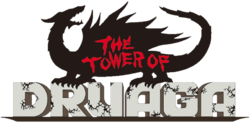
| |
| Developer(s) | Namco |
| Publisher(s) | Namco |
| Genre(s) | Action role-playing Maze |
| Console/platform of origin | Arcade |
| First installment | The Tower of Druaga (1984) |
| Latest installment | The Labyrinth of Druaga (2011) |
Babylonian Castle Saga (バビロニアン・キャッスル・サーガ, Babylonian Castle Saga) is a series of medieval maze-based action RPGs beginning with The Tower of Druaga, which spawned several sequel games and a spin-off anime series. Gil, the series' main protagonist, appears in Namco Roulette and as a downloadable costume for Mii Swordfighters. The Tower of Druaga's main theme and level complete theme appear in Namco Arcade '80s Retro Medley 1. The main theme from The Return of Ishtar, the direct sequel to The Tower of Druaga, appears in Namco Arcade '80s Retro Medley 2.
Baraduke[edit]
| Baraduke (universe) | |
|---|---|

| |
| Developer(s) | Namco Dempa |
| Publisher(s) | Namco Dempa |
| Genre(s) | Platformer Shooter |
| Console/platform of origin | Arcade |
| First installment | Alien Sector (1985) |
| Latest installment | Bakutotsu Kijūtei: Baraduke II (1988) |
Baraduke (バラデューク, Baraduke), originally known as Alien Sector outside of Japan, is a series of scrolling shooters that feature an astronaut rescuing docile aliens from hostile species. Although it was released a year earlier, the original game is noted for its similarities to Metroid; the player character, Kissy, is revealed to be a woman upon clearing the game. A friendly alien, Paccet, cameos in Namco Roulette.
Baten Kaitos[edit]
| Baten Kaitos (universe) | |
|---|---|

| |
| Developer(s) | Monolith Soft tri-Crescendo |
| Publisher(s) | Bandai Namco Nintendo |
| Genre(s) | Role-playing |
| Console/platform of origin | GameCube |
| First installment | Baten Kaitos: Eternal Wings and the Lost Ocean (2003) |
| Latest installment | Baten Kaitos I & II Remaster (2023) |
Baten Kaitos (バテン・カイトス, Baten Kaitos) is a card battle RPG series for the Nintendo GameCube developed by Monolith Soft and tri-Crescendo. While the first game, Baten Kaitos: Eternal Wings and the Lost Ocean, was published by Namco, the prequel, Baten Kaitos Origins, was published by Nintendo in all regions it released in.
A remix of the main battle theme from Origins, The valedictory elegy, plays on the Gaur Plain stage in Super Smash Bros. for Wii U.
Sagi, the main protagonist of Origins, and Milly, a party member from Origins, appear as spirits in Super Smash Bros. Ultimate. The Valedictory Elegy returns, now playing on stages with music listed in the "Other" and, as of version 8.1.0, "Super Smash Bros." categories.
Bosconian[edit]
| Bosconian (universe) | |
|---|---|

| |
| Developer(s) | Namco |
| Publisher(s) | Namco Midway |
| Genre(s) | Shooter |
| Console/platform of origin | Arcade |
| First installment | Bosconian (1981) |
| Latest installment | Final Blaster (1990) |
Bosconian (ボスコニアン, Bosconian) is a series of free-roaming space shooters. The player's fighter cameos in Namco Roulette.
Bravoman[edit]
| Bravoman (universe) | |
|---|---|
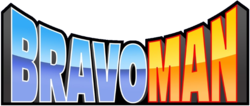
| |
| Developer(s) | Namco |
| Publisher(s) | Namco NEC |
| Genre(s) | Beat-'em-up Shooter |
| Console/platform of origin | Arcade |
| First installment | Bravoman (1988) |
| Latest installment | Bravoman: Binja Bash! (2013) |
Bravoman (ベラボーマン, Bravoman) is a comical action game that parodies typical superhero stories and cliches. In more recent years, it received both a web cartoon and a mobile game as part of ShiftyLook. The original Bravoman's title and first level music is featured as Bravoman Retro Medley.
Dragon Buster[edit]
| Dragon Buster (universe) | |
|---|---|
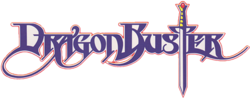
| |
| Developer(s) | Namco Dempa TOSE |
| Publisher(s) | Namco Dempa Enix |
| Genre(s) | Platformer Action role-playing |
| Console/platform of origin | Arcade |
| First installment | Dragon Buster (1985) |
| Latest installment | Dragon Valor (1999) |
Dragon Buster (ドラゴンバスター, Dragon Buster) is a series of medieval action RPGs with a platformer emphasis. The original game is notable for being the first game to include a double jump and a visual health meter. The protagonist, Clovis, cameos in Namco Roulette.
Dragon Spirit[edit]
| Dragon Spirit (universe) | |
|---|---|
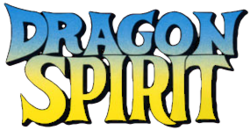
| |
| Developer(s) | Namco Consult Software Domark The Hit Squad |
| Publisher(s) | Namco Various |
| Genre(s) | Shooter |
| Console/platform of origin | Arcade |
| First installment | Dragon Spirit (1987) |
| Latest installment | Dragon Saber (1990) |
Dragon Spirit (ドラゴンスピリット, Dragon Spirit) is a series of dragon-based vertically scrolling shooters. The Area 1 theme from Dragon Spirit is remixed in Ultimate, and it also appears in its original form in Namco Arcade '80s Retro Medley 2.
Katamari[edit]
| Katamari (universe) | |
|---|---|

| |
| Developer(s) | Namco Monkey Craft |
| Publisher(s) | Namco |
| Genre(s) | Third-person action Puzzle |
| Console/platform of origin | PlayStation 2 |
| First installment | Katamari Damacy (2004) |
| Latest installment | We Love Katamari Reroll + Royal Reverie (2023) |
- "Katamari" redirects here. For the Japanese smasher, see Smasher: Katamari.
Katamari (塊魂, Clump Spirit) is a series of action-puzzle games in which the player controls the tiny Prince of All Cosmos, sent to Earth to roll up various objects into the titular sticky balls in order to recreate the stars in the sky, which were accidentally destroyed by the King of All Cosmos. A pixel version of the Prince (taken from the credits of Me and My Katamari) cameos in Namco Roulette in Ultimate. Debuting in 2004, Katamari is the newest Namco series to receive representation in Smash.
Coincidentally, Katamari Damacy Reroll, an HD remake of the original Katamari Damacy, was released on the same day as Super Smash Bros. Ultimate.
King & Balloon[edit]
| King & Balloon (universe) | |
|---|---|

| |
| Developer(s) | Namco |
| Publisher(s) | Namco GamePlan |
| Genre(s) | Shooter |
| Console/platform of origin | Arcade |
| First installment | King & Balloon (1980) |
| Latest installment | King & Balloon (1980) |
King & Balloon (キング & バルーン, King & Balloon) is a fixed shooter game where the player must defend a king from hostile balloons, notable for being one of the earliest examples of sampled speech in video games. The King cameos in Namco Roulette in the 3DS version of SSB4 and Ultimate.
Libble Rabble[edit]
| Libble Rabble (universe) | |
|---|---|
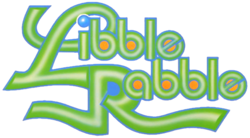
| |
| Developer(s) | Namco |
| Publisher(s) | Namco |
| Genre(s) | Action |
| Console/platform of origin | Arcade |
| First installment | Libble Rabble (1983) |
| Latest installment | Libble Rabble (1983) |
Libble Rabble (リブルラブル, Libble Rabble) is an action game involving harvesting mushrooms while avoiding enemies. The game was designed by Pac-Man creator, Tōru Iwatani. The bonus creature Topcup cameos in Namco Roulette, and the game's music is featured in Libble Rabble Retro Medley.
Mappy[edit]
| Mappy (universe) | |
|---|---|

| |
| Developer(s) | Namco Dempa Epoch Cangrejo Ideas Suzya and Cosmo Machia Inc. Rakuten Games HAUTECOUTURE Grateek Hamster Corporation |
| Publisher(s) | Namco Various |
| Genre(s) | Platformer |
| Console/platform of origin | Arcade |
| First installment | Mappy (1983) |
| Latest installment | Arcade Archives Mappy (2021) |
Mappy (マッピー, Mappy) is a series of platformer games based on a line of micromouse robots[1] starring the titular policemouse Mappy as he retrieves stolen goods from the literal cat burglar Goro and his goons, the Mewkies. The game's trampoline serves as the basis for Pac-Jump, and the functionality of Bonus Fruit's bell. The titular Mappy cameos in Namco Roulette. Mappy's main theme and level complete theme appear in Namco Arcade '80s Retro Medley 1, and Ultimate includes a remix of the game's music, Mappy Medley.
Metro-Cross[edit]
| Metro-Cross (universe) | |
|---|---|
| Developer(s) | Namco Various |
| Publisher(s) | Namco U.S. Gold |
| Genre(s) | Platformer |
| Console/platform of origin | Arcade |
| First installment | Metro-Cross (1985) |
| Latest installment | Metro-Cross (1985) |
Metro-Cross (メトロクロス, Metro-Cross) is a running-based platformer game where the player must escape a futuristic obstacle course before it self-destructs. The game's protagonist, Runner, cameos in Namco Roulette in the Wii U version of SSB4 and Ultimate, while the game's music is featured in Metro-Cross Retro Medley.
Rally-X[edit]
| Rally-X (universe) | |
|---|---|

| |
| Developer(s) | Namco Hamster Corporation |
| Publisher(s) | Namco Midway Hamster Corporation |
| Genre(s) | Maze Driving |
| Console/platform of origin | Arcade |
| First installment | Rally-X (1980) |
| Latest installment | Arcade Archives Rally-X (2021) |
Rally-X (ラリーX, Rally-X) is a series of driving-based maze games. Rally-X was the debut of the Special Flag, which has become a major symbol of Namco. In addition to the item, the main theme and level complete theme from New Rally-X appear in Namco Arcade '80s Retro Medley 1. The player's car cameos in Namco Roulette.
Sky Kid[edit]
| Sky Kid (universe) | |
|---|---|
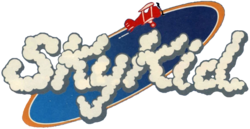
| |
| Developer(s) | Namco Epoch Hamster Corporation |
| Publisher(s) | Namco Epoch Sunsoft Hamster Corporation |
| Genre(s) | Shooter |
| Console/platform of origin | Arcade |
| First installment | Sky Kid (1985) |
| Latest installment | Arcade Archives Sky Kid (2021) |
Sky Kid (スカイキッド, Sky Kid) is a piloting-based scrolling shooter. The Red Baron player character cameos in Namco Roulette, and the game's music is featured in Sky Kid Retro Medley.
Taiko no Tatsujin[edit]
| Taiko no Tatsujin (universe) | |
|---|---|
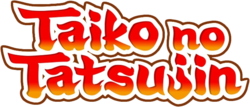
| |
| Developer(s) | Bandai Namco |
| Publisher(s) | Bandai Namco |
| Genre(s) | Rhythm |
| Console/platform of origin | Arcade |
| First installment | Taiko no Tatsujin (2001) |
| Latest installment | Taiko no Tatsujin: Rhythm Festival (2022) |
Taiko no Tatsujin (太鼓の達人, Taiko Master) is a series of drumming-based rhythm games that are particularly popular in Japan. Gameplay revolves around using a peripheral that simulates a taiko to the beat of various songs. The series' protagonist, Don-chan, cameos in Namco Roulette, and is the only Namco Roulette object not to be a sprite. Additionally, Gil's Mii costume trailer uses the arranged version of "Symphonic Druaga" from Taiko no Tatsujin Wii: Do-Don to Nidaime!.
Notably, Taiko no Tatsujin has previously crossed over with the Mario series in Mario Kart Arcade GP DX. Aside from including music from Pac-Man and other Namco series, the games have also featured songs from several franchises included in Smash, including Mario, Kirby, The Legend of Zelda, Pokémon, Splatoon, Mega Man, and Undertale.
Tales[edit]
- For the German smasher, see Smasher:Tales
- For the Chilean smasher, see Smasher:OZN~Tales
| Tales (universe) | |
|---|---|
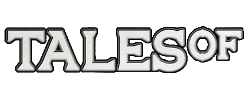
| |
| Developer(s) | Bandai Namco |
| Publisher(s) | Bandai Namco |
| Genre(s) | Role-playing |
| Console/platform of origin | Super Famicom |
| First installment | Tales of Phantasia (1995) |
| Latest installment | Tales of Symphonia Remastered (2023) |
Tales (テイルズ オブ, Tales of) is a long-running series of fantasy RPG games that are popular worldwide. The design of the main protagonist of Tales of Symphonia, Lloyd Irving, appears as a DLC costume for Mii Swordfighter in both SSB4 and Ultimate.
Thunder Ceptor[edit]
| Thunder Ceptor (universe) | |
|---|---|
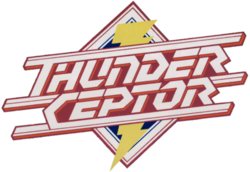
| |
| Developer(s) | Namco |
| Publisher(s) | Namco |
| Genre(s) | Shooter |
| Console/platform of origin | Arcade |
| First installment | Thunder Ceptor (1986) |
| Latest installment | 3-D Thunder Ceptor II (1986) |
Thunder Ceptor (サンダーセプター, Thunder Ceptor) is a series of pseudo-3D space shooters. The name entry theme from Thunder Ceptor appears in Namco Arcade '80s Retro Medley 2.
Valkyrie[edit]
| Valkyrie (universe) | |
|---|---|
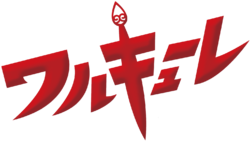
| |
| Developer(s) | Namco Nova Games Ltd. |
| Publisher(s) | Namco GamePlan |
| Genre(s) | Action-adventure Platformer |
| Console/platform of origin | Famicom |
| First installment | Valkyrie no Bōken: Toki no Kagi Densetsu (1986) |
| Latest installment | Valkyrie no Bōken: Toki no Kagi Densetsu with Xiaomu (2015) |
Valkyrie (ワルキューレ, Walküre) is a series of mythological action-adventure games. Valkyrie, the protagonist, cameos in Namco Roulette in the Wii U version of SSB4 and Ultimate, using her sprite from the second game in the series, The Legend of Valkyrie. The game's main theme also appears in Namco Arcade '80s Retro Medley 2.
Wonder Momo[edit]
| Wonder Momo (universe) | |
|---|---|
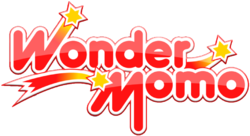
| |
| Developer(s) | Namco WayForward Technologies |
| Publisher(s) | Namco |
| Genre(s) | Beat-'em-up |
| Console/platform of origin | Arcade |
| First installment | Wonder Momo (1987) |
| Latest installment | Wonder Momo: Typhoon Booster (2014) |
Wonder Momo (ワンダーモモ, Wonder Momo) is a beat-'em-up game that acts as a light parody of tokusatsu stage shows. In recent years, the game was revived with a webcomic, an anime, and a mobile game. The transformation theme from Wonder Momo appears in Namco Arcade '80s Retro Medley 2.
Yokai Dochuki[edit]
| Yokai Dochuki (universe) | |
|---|---|

| |
| Developer(s) | Namco Now Production |
| Publisher(s) | Namco |
| Genre(s) | Platformer |
| Console/platform of origin | Arcade |
| First installment | Yokai Dochuki (1987) |
| Latest installment | Kyūkai Dōchūki (1990) |
Yokai Dochuki (妖怪道中記, Yōkai Travel Journal), originally known in English as Shadow Land, is an atypical platformer game in which Tarosuke, the protagonist, travels through the afterlife towards his ultimate fate. The game's music is featured in Yokai Dochuki Retro Medley.
Capcom series[edit]
Devil May Cry[edit]
| Devil May Cry (universe) | |
|---|---|

| |
| Developer(s) | Capcom |
| Publisher(s) | Capcom |
| Genre(s) | Action |
| Console/platform of origin | PlayStation 2 |
| First installment | Devil May Cry (2001) |
| Latest installment | Devil May Cry: Peak of Combat (2024) |
Devil May Cry (デビル メイ クライ, Devil May Cry) is a series of action video games developed by Capcom. Originally planned as an installment in the Resident Evil series, it was eventually decided to make it a new property after becoming too different from previous installments. Starring the demon hunter Dante, his brother Vergil, and (later on) his nephew Nero, the series has the heroes battle their way through hordes of demons with various playstyles to save the Earth from unholy dominion.
Dante was announced as a Mii Costume during Mr. Sakurai Presents "Kazuya" on June 28th, 2021.
Ghosts 'n Goblins[edit]
| Ghosts 'n Goblins (universe) | |
|---|---|
| Developer(s) | Capcom Micronics TOSE |
| Publisher(s) | Capcom |
| Genre(s) | Platformer |
| Console/platform of origin | Arcade |
| First installment | Ghosts 'n Goblins (1985) |
| Latest installment | Ghosts 'n Goblins Resurrection (2021) |
Ghosts 'n Goblins (魔界村, Demon Village) is a series of run-and-gun platformer video games developed by Capcom, following the adventures of a knight named Arthur and his quest to save a princess from various monsters. It is well known for its high difficulty.
Arthur was announced as a Mii Costume alongside returning Monster Hunter costumes during Mr. Sakurai Presents "Pyra/Mythra" on March 4th, 2021. A spirit of Arthur is also available for those who have save data from Ghosts 'n Goblins Resurrection in the system. He later began appearing on the Spirit Board and became available to purchase from the Shop.
Resident Evil[edit]
| Resident Evil (universe) | |
|---|---|

| |
| Developer(s) | Capcom |
| Publisher(s) | Capcom |
| Genre(s) | Survival horror Third-person shooter First-person shooter |
| Console/platform of origin | PlayStation |
| First installment | Resident Evil (1996) |
| Latest installment | Resident Evil 4 (remake, 2023) |
Resident Evil (バイオハザード, Biohazard) is a series of survival horror shooters developed by Capcom. Initially envisioned as a remake of the 1989 horror game Sweet Home, the direction shifted into an original title as Capcom lost the rights to the property before release. The main storyline of the series features various protagonists fighting against the Umbrella Corporation or people with connections to them, who has developed various deadly viruses creating zombies and nightmarish mutants.
In Super Smash Bros. Ultimate, four characters from the series, Chris Redfield, Leon Kennedy, Albert Wesker, and Jill Valentine, all appear as spirits. They were first released on November 29th, 2019 via the Spirit Board event Oust Resident Evil!.
Konami series[edit]
Getsu Fuma Den[edit]
| Getsu Fuma Den (universe) | |
|---|---|

| |
| Developer(s) | Konami GuruGuru |
| Publisher(s) | Konami |
| Genre(s) | Action role-playing |
| Console/platform of origin | Famicom |
| First installment | Getsu Fūma Den (1987) |
| Latest installment | Getsu Fūma Den: Undying Moon (2022) |
Getsu Fuma Den (月風魔伝, The Legend of Getsu Fuma) is a side-scrolling action-adventure series by Konami which debuted exclusively in Japan for the Famicom. With gameplay that had overlap with Castlevania II: Simon's Quest, the game follows Fuma, the surviving member of a trio of brothers, fighting to seek revenge on a demon that killed the rest of his family. A modern entry, Getsu Fuma Den: Undying Moon, was released in early access on May 13th, 2021, with the completed version released on February 9th, 2022.
A remixed music track from the game, Go! Getsu Fuma, appears on Dracula's Castle in Super Smash Bros. Ultimate, carried over unchanged from its crossover appearance in Castlevania: Harmony of Despair. The original game is mentioned by name in the credits from the Sound Test.
Goemon[edit]
| Goemon (universe) | |
|---|---|
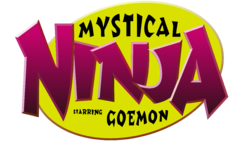
| |
| Developer(s) | Konami Hamster Corporation |
| Publisher(s) | Konami Hamster Corporation |
| Genre(s) | Action-adventure Platformer |
| Console/platform of origin | Arcade |
| First installment | Mr. Goemon (1986) |
| Latest installment | Arcade Archives Mr. Goemon (2015) |
Goemon (がんばれゴエモン, Go For It, Goemon!) is an action-adventure series made by Konami. Although Konami mostly regards the series as largely too culturally based to be released worldwide, several games have been released to the west: one for the Super NES (The Legend of the Mystical Ninja in 1991), two for the Nintendo 64 (Mystical Ninja Starring Goemon in 1997, and Goemon's Great Adventure in 1999), and two for the Game Boy (the first in 1991, as part of Konami GB Collection Vol. 3, and Mystical Ninja Starring Goemon in 1997, the former of which was released in Europe but not in America). The series is mainly action-adventure oriented, although the series has dipped its toes into other genres, such as role-playing games and puzzle games. A spiritual successor to this series published by Good-Feel in 2023 was made by the original team under the name Mameda no Bakeru.
The main protagonist, the titular Goemon, appears in Super Smash Bros. Ultimate as a Mii Swordfighter Costume as part of Round 3.
Power Pros[edit]
| Power Pros (universe) | |
|---|---|
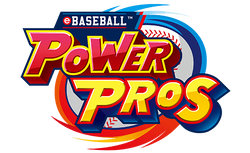
| |
| Developer(s) | Power Pros Production Joymoa |
| Publisher(s) | Konami 2K Sports |
| Genre(s) | Sports |
| Console/platform of origin | Super Famicom |
| First installment | Jikkyō Powerful Pro Yakyū '94 (1994) |
| Latest installment | Powerful Pro Yakyū 2024-2025 (2024) |
Power Pros, known in Japan as eBaseball Powerful Pro Baseball (formerly 実況パワフルプロ野球, Live Powerful Pro Baseball) is a long-running series of baseball video games created by Konami. The series is known for its heavily stylized designs, and fast-paced and deep gameplay. Most games in the series acquired the rights to use the official branding of real baseball leagues around the world, including Nippon Professional Baseball, Major League Baseball, Korea Baseball Organization, World Baseball Classic, and all of their associated players' unions. Spin-offs were also made such as the more realistic Professional Baseball Spirits series of baseball simulations and the handheld exclusive Power Pro Kun Pocket series. The series is one of Konami's most popular game series, although it is not widely available outside of Japan. The main character, Power Pro-Kun, is known as Konami's mascot character, much like Nintendo's Mario and Sega's Sonic.
Power Pro-Kun, Aoi Hayakawa, & Mamoru Ikari were added as a combined spirit in Ultimate via the Sentinels, Gods, and Baseball Spirit Board event in January, 2024.
Marvelous series[edit]
Daemon X Machina[edit]
| Daemon X Machina (universe) | |
|---|---|
| Developer(s) | Marvelous |
| Publisher(s) | Marvelous Nintendo Xseed Games |
| Genre(s) | Action Third-person shooter |
| Console/platform of origin | Switch |
| First installment | Daemon X Machina (2019) |
| Latest installment | Daemon X Machina (2019) |
Daemon X Machina (デモンエクスマキナ, Daemon X Machina) is a third-person shooter mecha video game. In the game, the player avatar pilots a mech known as an Arsenal as part of The Outers. In these mechs, the player fight against hostile AI turned haywire by energy radiating from the moon.
Four spirits of characters and their respective Arsenals were added via the Arsenals at the Ready! DAEMON X MACHINA Spirit Board event in Super Smash Bros. Ultimate. These include Radiant Gleam, Kloster (Grief), Bullet Walker (Brigadier General), and High Line (Guns Empress).
No More Heroes[edit]
| No More Heroes (universe) | |
|---|---|
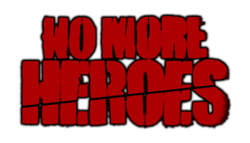
| |
| Developer(s) | Grasshopper Manufacture feelplus AQ Interactive |
| Publisher(s) | Grasshopper Manufacture Marvelous Various |
| Genre(s) | Action-adventure Hack and slash |
| Console/platform of origin | Wii |
| First installment | No More Heroes (2007) |
| Latest installment | No More Heroes III (2021) |
No More Heroes (ノーモア★ヒーローズ, No More Heroes) is a series of action-adventure hack and slash games starring Travis Touchdown, who inadvertently becomes involved in the United Assassins Association and seeks to hunt down assassins of a higher rank to prevent other assassins from targeting him.
On October 3rd, 2020, it was announced that Travis Touchdown will be added to the game as a Mii Costume for the Mii Swordfighter in Super Smash Bros. Ultimate. Additionally, three spirits from No More Heroes III were added via the No More Heroes 3 Spirit Board event. These include Travis Touchdown, upgradable into his Full Armor from No More Heroes III, and FU.
Sakuna: Of Rice and Ruin[edit]
| Sakuna: Of Rice and Ruin (universe) | |
|---|---|
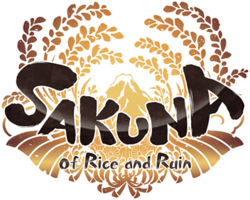
| |
| Developer(s) | Edelweiss |
| Publisher(s) | Marvelous Xseed Games |
| Genre(s) | Action role-playing Simulation |
| Console/platform of origin | Microsoft Windows PlayStation 4 Switch |
| First installment | Sakuna: Of Rice and Ruin (2020) |
| Latest installment | Sakuna: Of Rice and Ruin (2020) |
Sakuna: Of Rice and Ruin (天穂のサクナヒメ, Princess Sakuna of the Heavens) is an action role-playing simulation video game. In the game, the player controls the goddess Princess Sakuna, who must fend off the demons of Isle of Demons while also looking after a small group of humans.
Three spirits of characters were added via the Sakuna: Of Rice and Ruin Spirit Board event in Super Smash Bros. Ultimate. These include Sakuna, Kokorowa, and Tama.
With the addition of downloadable content, Sakuna: Of Rice and Ruin is currently the newest universe to be represented in Super Smash Bros. Ultimate, as it released nearly 2 years after the release of Ultimate. It is also the first universe in the Super Smash Bros. series to have debuted in the 2020s.
Microsoft series[edit]
Doom[edit]
- "Doom" redirects here. For other uses, see Doom (disambiguation).
| Doom (universe) | |
|---|---|

| |
| Developer(s) | id Software |
| Publisher(s) | id Software GT Interactive Software Activision Bethesda Softworks |
| Genre(s) | First-person shooter |
| Console/platform of origin | MS-DOS |
| First installment | Doom (1993) |
| Latest installment | Legacy of Rust (2024) |
Doom (ドゥーム, Doom) is a series of first-person shooter games developed by id Software. The story revolves around a space marine, called Doom Guy or the Doom Slayer, and his eternal conflict against invading demons from Hell threatening Earth and Mars.
On October 5th, 2021, it was announced that the Doom Slayer, the main character, will be added to the game as a Mii Costume for the Mii Gunner.
The Elder Scrolls[edit]
| The Elder Scrolls (universe) | |
|---|---|
| Developer(s) | Bethesda Softworks Various |
| Publisher(s) | Bethesda Softworks |
| Genre(s) | Action role-playing |
| Console/platform of origin | MS-DOS |
| First installment | The Elder Scrolls: Arena (1994) |
| Latest installment | The Elder Scrolls: Castles (2024) |
The Elder Scrolls is a series of fantasy role-playing games primarily developed and produced by Bethesda. Players take control of several characters and play through major events in a fantasy world on the continent known as Tamriel. The series is notable for being among the earliest true open-world games in the industry. While the series has more games than it, the most popular game (and the one currently represented in Super Smash Bros.) in the series is The Elder Scrolls V: Skyrim, in which the player must stop the dragon Alduin from destroying the world.
On June 28th, 2021, it was announced that the Dragonborn (also known as the Dovahkiin), the player character of Skyrim, will be added to the game as a Mii Costume for the Mii Swordfighter.
Fallout[edit]
| Fallout (universe) | |
|---|---|

| |
| Developer(s) | Bethesda Softworks Interplay Productions Obsidian Entertainment |
| Publisher(s) | Bethesda Softworks Interplay Productions |
| Genre(s) | First-person shooter Role-playing |
| Console/platform of origin | MS-DOS Microsoft Windows |
| First installment | Fallout (1997) |
| Latest installment | Fallout Shelter Online (2020) |
Fallout is a series of role-playing games developed by Interplay Entertainment (later Bethesda Softworks). The series revolves around an alternate timeline America that has been ravaged by nuclear war and follows the story of the survivors living their lives in the apocalyptic wastelands. The series started as top-down, turn-based role-playing games with an isometric view and has evolved to feature first-person shooter elements since Fallout 3. The series is particularly known for its dialogue writing, with extensive branching conversation options that often lead to different outcomes that sometimes affect the story.
On June 22nd, 2020, it was announced that Vault Boy, the mascot of the series, will be added to the game as a Mii Costume for the Mii Gunner.
Sega series[edit]
13 Sentinels[edit]
| 13 Sentinels (universe) | |
|---|---|
| Developer(s) | Vanillaware |
| Publisher(s) | Atlus Sega |
| Genre(s) | Adventure Real-time strategy |
| Console/platform of origin | PlayStation 4 |
| First installment | 13 Sentinels: Aegis Rim (2019) |
| Latest installment | 13 Sentinels: Aegis Rim (2019) |
13 Sentinels: Aegis Rim (十三機兵防衛圏, 13 Machine Soldier Defense Zone) is an adventure real-time strategy game developed by Vanillaware and published by Atlus and Sega. The game sees the player take controls of 13 different characters in a mystery-adventure narrative interspersed with a real-time strategy "Destruction mode."
The 13 Sentinel Pilots were all added as a single combined spirit in Ultimate via the Sentinels, Gods, and Baseball Spirit Board event in January, 2024.
After Burner[edit]
| After Burner (universe) | |
|---|---|
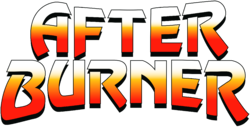
| |
| Developer(s) | Sega Various |
| Publisher(s) | Sega Sunsoft Tengen Activision MCM Software |
| Genre(s) | Combat flight simulator |
| Console/platform of origin | Arcade |
| First installment | After Burner (1987) |
| Latest installment | 3D After Burner II (2013) |
After Burner (アフターバーナー, After Burner) is a series of combat flight simulation games by Sega.
The series is represented in Super Smash Bros. for Wii U via a remix from the Bayonetta series titled After Burner (∞ Climax Mix), which plays on Umbra Clock Tower. It is also referenced through the name of Bayonetta's aerial side special, After Burner Kick.
After Burner (∞ Climax Mix) returns in Super Smash Bros. Ultimate on the same stage.
SNK series[edit]
Alpha Mission[edit]
| Alpha Mission (universe) | |
|---|---|

| |
| Developer(s) | SNK Hamster Corporation |
| Publisher(s) | SNK Hamster Corporation |
| Genre(s) | Shoot-'em-up |
| Console/platform of origin | Arcade |
| First installment | Alpha Mission (1985) |
| Latest installment | Arcade Archives Alpha Mission (2019) |
Alpha Mission (エー・エス・オー - アーマード・スクラム・オブジェクト, ASO: Armored Scrum Object) is a series of vertically-scrolling shoot-'em-up games created by SNK. Alpha Mission was released as an arcade game in 1985 and was later ported to the NES. A sequel, Alpha Mission II, was released in 1991 for the Neo Geo arcade and home systems. In the series, the player controls the fighter SYD against the deadly fleet of the Seven Star Alliance, attacking enemies in the air and on the ground.
A music track from the game, Theme of SYD, appears in Super Smash Bros. Ultimate.
Art of Fighting[edit]
| Art of Fighting (universe) | |
|---|---|
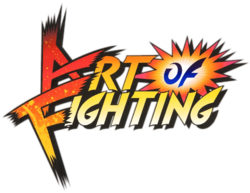
| |
| Developer(s) | SNK Hamster Corporation |
| Publisher(s) | SNK Hamster Corporation |
| Genre(s) | Fighting |
| Console/platform of origin | Neo Geo MVS |
| First installment | Art of Fighting (1992) |
| Latest installment | Art of Fighting Anthology (2007) |
Art of Fighting (龍虎の拳, Fist of Dragon and Tiger) is series of 2D competitive fighting games created by SNK starting in 1992. This trilogy was the second fighting game series created by SNK after Fatal Fury: King of Fighters, and the first two games are prequels to the Fatal Fury series, being set between the late 1970s and early 1980s. It is based around the travels of its protagonist, Ryo Sakazaki, who is one of SNK's most prominent fighting game characters.
Ryo Sakazaki, Yuri Sakazaki, and King appear as background characters in the King of Fighters Stadium in Super Smash Bros. Ultimate, with Ryo also appearing as a Mii Brawler costume and spirit. Geese Howard's Spirit Battle also takes partly from his appearance as a secret boss in Art of Fighting 2. There are additionally two music tracks from the series: a remix of the series' main theme, titled ART of FIGHT - Art of Fighting, and the Fatal Fury Special rendition of the same song, titled Art of Fighting Ver.230000000.0 - FATAL FURY SPECIAL.
Athena[edit]
| Athena (universe) | |
|---|---|

| |
| Developer(s) | SNK Hamster Corporation |
| Publisher(s) | SNK Hamster Corporation |
| Genre(s) | Platformer |
| Console/platform of origin | Arcade |
| First installment | Athena (1986) |
| Latest installment | Arcade Archives Athena (2018) |
Athena (アテナ, Athena) is a series of action games developed by SNK and loosely inspired by Greek mythology. Its first game, Athena, released as an arcade game in 1986 and was later ported to the NES. The game is notorious for its high difficulty, but it became a hit due to the main character's bikini getup, which was unique to her at the time. In the series, Princess Athena runs away from her kingdom in search for adventure. Her descendant, Athena Asamiya, stars in later games, such as Psycho Soldier. Both Princess Athena and Athena Asamiya appear in The King of Fighters.
The music track for the first level of Athena, titled Forest World - Athena, appears in Super Smash Bros. Ultimate.
Ikari Warriors[edit]
| Ikari Warriors (universe) | |
|---|---|
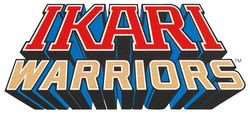
| |
| Developer(s) | SNK Hamster Corporation |
| Publisher(s) | SNK Hamster Corporation |
| Genre(s) | Run-and-gun |
| Console/platform of origin | Arcade |
| First installment | Ikari Warriors (1986) |
| Latest installment | Arcade Archives Ikari III -The Rescue- (2020) |
Ikari Warriors (怒, Fury) is a series of vertically-scrolling shooter games developed by SNK. The eponymous "Ikari Warriors", Ralf Jones and Clark Still (originally called Paul and Vince in the first game's Western release), are two mercenaries-for-hire who battle through enemies to reach the village of Ikari. The games were heavily influenced by the Rambo franchise. Both Ralf and Clark have continued to make appearances in The King of Fighters, and have appeared in Metal Slug as well since its sixth installment.
Both Ralf Jones and Clark Still appear as background characters in the King of Fighters Stadium in Super Smash Bros. Ultimate, as well as a shared spirit. The series is also represented with The King of Fighters XIV rendition of the theme "Ikari", titled IKARI - KOF XIV.
The King of Fighters[edit]
| The King of Fighters (universe) | |
|---|---|

| |
| Developer(s) | SNK Eolith Hamster Corporation |
| Publisher(s) | SNK Atlus Hamster Corporation |
| Genre(s) | Fighting |
| Console/platform of origin | Neo Geo MVS |
| First installment | The King of Fighters '94 (1994) |
| Latest installment | The King of Fighters XV (2022) |
The King of Fighters (ザ・キング・オブ・ファイターズ, The King of Fighters) is a long-running fighting game series by SNK that combines characters from many of their different franchises, including Fatal Fury, Art of Fighting, Psycho Soldier, Samurai Shodown, and Ikari Warriors, as well as original characters. The series is known for its three-on-three team battles and extensive cast. The KOF series takes place in a timeline different than the Fatal Fury shared universe, whereas both the first two Fatal Fury and Art of Fighting storylines are being acknowledged while having their events' timelines reworked to match the characters' ages in this series.
In Ultimate, The King of Fighters is treated as Terry's secondary universe; it forms the basis for his stage, King of Fighters Stadium, and five of the original characters from the series make cameos within the stage, those being Kyo Kusanagi, Iori Yagami, Goro Daimon, Chang Koehan, and Choi Bounge. Kyo and Iori also appear as spirits. Iori also appears as a Mii costume for the Mii Brawler. Several characters from other SNK franchises also appear on King of Fighters Stadium using their designs from The King of Fighters series. Eighteen music tracks from many The King of Fighters installments are also available, in addition to some music tracks from the Fatal Fury and Ikari Warriors series being included by way of preexisting remixes from The King of Fighters games. Takashi Kondo reprises his role in Smash since The King of Fighters XIV.
Metal Slug[edit]
| Metal Slug (universe) | |
|---|---|
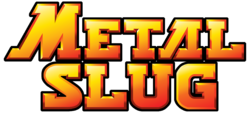
| |
| Developer(s) | Nazca Corporation SNK Hamster Corporation |
| Publisher(s) | Nazca Corporation SNK Hamster Corporation |
| Genre(s) | Run-and-gun |
| Console/platform of origin | Neo Geo MVS |
| First installment | Metal Slug (1996) |
| Latest installment | Metal Slug Tactics (2024) |
Metal Slug (メタルスラッグ, Metal Slug) is a series of run-and-gun shooters. Known for their fluid animation and two-player co-op gameplay, the series involves a small team of soldiers called the Peregrine Falcons and the SPARROWS under the command of the Regular Army as they travel the world to defeat mysterious enemy factions (most notably the military madman General Morden and the Rebel Army and the alien invaders known as Mars People, though in Metal Slug 5 the main enemies are the mysterious Ptolemaic Army and in Metal Slug 6 the Rebel army and the Mars People made a alliance with the Peregrine Falcons to stand over the outbreak of a new alien invasion knows as The Invaders), wielding semi-automatic handguns and a small tank known as SV-001 (the eponymous "Metal Slug"). As each stage progresses, they acquire more powerful weapons and tanks until confronting the final enemy. The characters of Metal Slug make common appearances in The King of Fighters, and starting with Metal Slug 6, the series also crosses over with Ikari Warriors.
Metal Slug is represented in Smash Ultimate through five music tracks playable on the King of Fighters Stadium stage: Main Theme of Metal Slug - METAL SLUG, Assault Theme - METAL SLUG 1-3, Final Attack - METAL SLUG 1-6, Judgment - METAL SLUG 2, and Blue Water Fangs (The Island of Dr. Moreau) - METAL SLUG 3.
Psycho Soldier[edit]
| Psycho Soldier (universe) | |
|---|---|
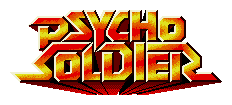
| |
| Developer(s) | SNK Hamster Corporation |
| Publisher(s) | SNK Hamster Corporation |
| Genre(s) | Action platformer |
| Console/platform of origin | Arcade |
| First installment | Psycho Soldier (1987) |
| Latest installment | Arcade Archives Psycho Soldier (2019) |
Psycho Soldier (サイコ・ソルジャー, Psycho Soldier) is an action platformer game developed by SNK and was released in arcades in 1987. It is the successor game to Athena, starring Athena Asamiya, a Japanese schoolgirl descendant of the similarly-named goddess who uses her psychokinetic powers to fight an alien invasion alongside the Chinese youngster Sie Kensou. It is notable for being the first video game to feature a theme song with sampled lyrics.
Athena Asamiya appears as a background character in King of Fighters Stadium using her design from King of Fighters '95, as well as a spirit, using her original game artwork. The Psycho Soldier Theme is also covered in both Japanese and English, with the latter being the first English version since its original release.
Samurai Shodown[edit]
| Samurai Shodown (universe) | |
|---|---|

| |
| Developer(s) | SNK Hamster Corporation |
| Publisher(s) | SNK Hamster Corporation |
| Genre(s) | Fighting |
| Console/platform of origin | Neo Geo MVS |
| First installment | Samurai Shodown (1993) |
| Latest installment | Samurai Shodown NeoGeo Collection (2020) |
Samurai Shodown (サムライスピリッツ, Samurai Spirits) is a weapon-based fighting game series made by SNK. The games are set in Japan in the late 18th century, involving the main protagonist Haohmaru and various other characters doing battle against dark forces threatening to spread their evil into the mortal world, such as the malevolent deity Ambrosia, who manipulates extremists like the sorcerer Shiro Amakusa to do its bidding. The hallmark of the series is the incredibly high damage on all moves. This makes most matches over in a few good hits, naturally encouraging a slower, more defense and patience based playstyle. The earlier titles in the series are also well-known for their poor English translations at times. Despite the name of the series, most of the characters are not samurai in the traditional sense.
In Super Smash Bros. Ultimate, Nakoruru appears as a Mii costume for the Mii Swordfighter, and she appears as a spirit along with Haohmaru. The series is also represented with three music tracks from the first installment: Tuna, Banquet of Nature, and Gaia.
Square Enix series[edit]
Bravely Default[edit]
| Bravely Default (universe) | |
|---|---|

| |
| Developer(s) | Silicon Studio Claytechworks |
| Publisher(s) | Square Enix Nintendo |
| Genre(s) | Role-playing |
| Console/platform of origin | 3DS |
| First installment | Bravely Default (2012) |
| Latest installment | Bravely Default II (2021) |
Bravely Default (ブレイブリーデフォルト, Bravely Default) is a series of role-playing games developed by Silicon Studio and published by Square Enix in Japan, with Nintendo publishing in all other regions. Originally conceived as a sequel to Final Fantasy: The 4 Heroes of Light, the connections to the Final Fantasy franchise were eventually dropped in favor of original characters and settings. Battles are turn based, with the unique twist of being able to brave or default every turn. Brave Points (BP) must be spent to attack, or "Brave" enemies, and more available BP means more chances to attack. The player can even go into negative BP, but are then unable to perform any action until the BP balance reaches 0 again. BP will restore naturally, or the player can choose to "Default," which reduces damage taken and replenishes BP quicker. The games also utilize a job system where players battle the holders of Asterisks, items that grant jobs, in order to claim them and thereby use those jobs for themselves, granting their characters special abilities in battle.
On February 23, 2021, it was announced that spirits from Bravely Default II, the third game in the series, would introduced via the Spirit Board event simply titled BRAVELY DEFAULT II on February 26 as a tie-in to the game's release. All four protagonists are available in pairs: Seth & Gloria and Elvis & Adelle.
Mana[edit]
| Mana (universe) | |
|---|---|

| |
| Developer(s) | Square Enix Square Brownie Brown |
| Publisher(s) | Square Enix Square Nintendo |
| Genre(s) | Action role-playing |
| Console/platform of origin | Game Boy |
| First installment | Final Fantasy Adventure (1991) |
| Latest installment | Visions of Mana (2024) |
Mana (聖剣伝説, The Legend of the Sacred Sword) is a series of action role-playing games created by Square Enix (formerly Squaresoft). The series was originally developed as a supplemental storyline to Final Fantasy, but elements of that series were dropped from the second installment, Secret of Mana, onwards. The series often revolves around the Mana Tree, the Mana Sword, and the forces trying to steal and harness its power. The series is considered a pioneer of the action RPG genre with the introduction of a real-time battle system reminiscent of top-down The Legend of Zelda games.
On April 21, 2020, it was announced that spirits from the 2020 remake of Trials of Mana would be added via the Spirit Board event The Spirits of Mana event on April 24 as a tie-in to the remake's release on the same day. All six protagonists are featured in three pairs: Duran & Angela, Kevin & Charlotte, and Hawkeye & Riesz, with each pairing representing one of the three storylines of Trials of Mana.
Octopath Traveler[edit]
| Octopath Traveler (universe) | |
|---|---|

| |
| Developer(s) | Square Enix Division 11 Acquire |
| Publisher(s) | Square Enix Nintendo |
| Genre(s) | Role-playing |
| Console/platform of origin | Switch |
| First installment | Octopath Traveler (2018) |
| Latest installment | Octopath Traveler II (2023) |
Octopath Traveler (オクトパス トラベラー, Octopath Traveler) is a turn-based role-playing game developed by Square Enix and Acquire, conceived from the same producer who previously worked on the Bravely Default series on Nintendo 3DS. In the game, the player controls a set of eight characters (Ophilia, Cyrus, Tressa, Olberic, Primrose, Alfyn, Therion, and H'aanit, their first names spelling out O-C-T-O-P-A-T-H) through the land of Orsterra, with each character having their own storyline, archetype, and abilities. The game has an "HD-2D" diorama art-style for the backgrounds with sprites used for the characters both in and out of battle. The original game is among the top twenty-five best selling titles on Nintendo Switch with over two million copies sold, a prequel, Octopath Traveler: Champions of the Continent, released on October 28, 2020, and a sequel, Octopath Traveler II, released on February 24, 2023.
On July 7, 2020, it was revealed that spirits featuring the eight playable characters in Octopath Traveler would be added via the Spirit Board event Second Anniversary of OCTOPATH TRAVELER on July 10. The spirits would see each of the eight playable characters split into four pairs, these pairs being Olberic & Primrose, Tressa & Cyrus, Alfyn & Therion, and H'aanit & Ophilia.
Ubisoft series[edit]
Assassin's Creed[edit]
| Assassin's Creed (universe) | |
|---|---|

| |
| Developer(s) | Ubisoft |
| Publisher(s) | Ubisoft |
| Genre(s) | Action-adventure |
| Console/platform of origin | Xbox 360 PlayStation 3 |
| First installment | Assassin's Creed (2007) |
| Latest installment | Assassin's Creed Mirage (2023) |
Assassin's Creed (アサシンクリード, Assassin Creed) is a series of stealth action-adventure games developed by Ubisoft. The series follows the millennia-long clash between two factions: the Assassins and the Knights Templar, as Desmond Miles experiences the lives of his ancestors to uncover their hidden secrets in the (then) near-future of 2012.
On January 16th, 2020, it was confirmed that Altaïr would be a Mii Costume for the Mii Swordfighter as part of Round 5 of DLC.
Rabbids[edit]
| Rabbids (universe) | |
|---|---|
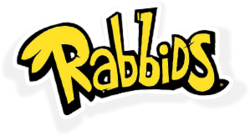
| |
| Developer(s) | Ubisoft Headstrong Games |
| Publisher(s) | Ubisoft |
| Genre(s) | Party Turn-based strategy Educational FMV Game |
| Console/platform of origin | Game Boy Advance |
| First installment | Rayman Raving Rabbids (2006) |
| Latest installment | Mario + Rabbids Sparks of Hope (2022) |
Rabbids (ラビッツ・パーティー, Rabbits Party; Lapins Crétins (Moronic Rabbits) in French) is a multimedia franchise that began as a spinoff of the Rayman series before branching off into its own separate universe. The series follows the various antics of the titular Rabbids, a race of crazed rabbit-like creatures that spout gibberish and cause mischief wherever they go. The Rabbids series and the Super Mario series crossed over in the turn-based strategy series Mario + Rabbids, in which a device called the "SupaMerge" hits the Rabbids' Time-Washing Machine and transports them to the Mushroom Kingdom, merging them with various objects found therein.
Rabbid Mario, Rabbid Peach, and Rabbid Kong from Kingdom Battle appear as spirits in Super Smash Bros. Ultimate, with the latter using his design from Kingdom Battle's "Donkey Kong Adventure" DLC expansion. Additionally, on January 16th, 2020, it was confirmed that Rabbids headgear would be a Mii Costume as part of Round 5 of DLC.
Rayman[edit]
| Rayman (universe) | |
|---|---|

| |
| Developer(s) | Ubisoft |
| Publisher(s) | Ubisoft Gameloft Feral Interactive Nintendo |
| Genre(s) | Platformer |
| Console/platform of origin | Atari Jaguar |
| First installment | Rayman (1995) |
| Latest installment | Rayman Mini (2019) |
Rayman (レイマン, Rayman) is a platformer franchise focusing on the limbless hero Rayman as he protects his world against everything from robot pirates to psychotic bunnies.
The main titular protagonist, alongside his best friend Globox and the barbarian princess Barbara from Rayman Legends, appear as trophies in Super Smash Bros. for Wii U.
Rayman returns as a spirit in Super Smash Bros. Ultimate.
Others[edit]
BIT.TRIP[edit]
| BIT.TRIP (universe) | |
|---|---|
| Developer(s) | Choice Provisions |
| Publisher(s) | Aksys Games Arc System Works Choice Provisions |
| Genre(s) | Music |
| Console/platform of origin | Wii (WiiWare) |
| First installment | BIT.TRIP BEAT (2009) |
| Latest installment | BIT.TRIP RERUNNER (2023) |
BIT.TRIP is a series of rhythm games by independent developer Gaijin Games (now known as Choice Provisions) starring an entity known as CommanderVideo.
CommanderVideo appears in Super Smash Bros. for Wii U as a trophy, using his three-dimensional appearance from BIT.TRIP Presents...Runner2: Future Legend of Rhythm Alien. This marks BIT.TRIP as the first series created by an independent developer to be represented in Smash.
Culdcept[edit]
| Culdcept (universe) | |
|---|---|

| |
| Developer(s) | OmiyaSoft |
| Publisher(s) | Various Sega Namco Nintendo |
| Genre(s) | Board game |
| Console/platform of origin | Sega Saturn |
| First installment | Culdcept (1997) |
| Latest installment | Culdcept Revolt (2016) |
Culdcept (カルドセプト, Culdcept) is a series of card collecting board games released on multiple consoles with different publishers, such as Sega, Namco Bandai, and Nintendo.
The character Goligan appears as a trophy in Super Smash Bros. for Nintendo 3DS. A remix of the title theme from the first 3DS installment, known simply as Culdcept, plays on the Boxing Ring stage in Super Smash Bros. for Wii U.
Goligan returns as a spirit in Super Smash Bros. Ultimate, as well as Culdra, the goddess and mascot of the series, and Allen, the main protagonist of Culdcept Revolt. The Culdcept track returns. Additionally, two tracks from Culdcept Revolt are added, Revolt -Striving for Hope- and Worthy Rival Battle. All three tracks play on stages with music listed in the "Other" and, as of version 8.1.0, "Super Smash Bros." categories.
Cuphead[edit]
| Cuphead (universe) | |
|---|---|

| |
| Developer(s) | StudioMDHR |
| Publisher(s) | StudioMDHR |
| Genre(s) | Run-and-gun platformer |
| Console/platform of origin | Xbox One Microsoft Windows |
| First installment | Cuphead (2017) |
| Latest installment | Cuphead (2017) |
Cuphead (カップヘッド, Cuphead) is a 2D sidescrolling run-and-gun platformer developed by the Canada-based StudioMDHR and inspired by series such as Contra, Gunstar Heroes, and Gradius. Notably, the art style is rooted in 1930s rubber-hose cartoons inspired by the works of Disney and Fleischer Studios. The story follows two brothers, Cuphead and Mugman, who live on the Inkwell Isles. After gambling with the Devil and losing their souls, they are forced to battle the Devil's debtors across the Inkwell Isles in order to return their Soul Contracts and save themselves. A downloadable expansion titled The Delicious Last Course was released on June 30th, 2022, which adds Ms. Chalice as an additional playable character, a new Inkwell Isle, and a new story involving collecting ingredients for the jolly Chef Saltbaker.
On January 16th, 2020, it was announced that Cuphead would be a Mii Fighter Costume for the Mii Gunner as part of Round 5 of DLC, with a unique introduction scene based on the storybook opening of the original game. The Mii Costume is bundled with the music track Floral Fury, the boss theme for Cagney Carnation, which can play on stages under the categories of "Other" and, as of version 8.1.0, "Super Smash Bros." Later, on February 11th, 2020, it was announced that the Spirit Board event Ready? Wallop! would start on February 14th of the same year, featuring spirits for Cuphead, Mugman, King Dice, and the Devil.
Glory of Heracles[edit]
| Glory of Heracles (universe) | |
|---|---|

| |
| Developer(s) | Data East Paon |
| Publisher(s) | Data East Paon Nintendo |
| Genre(s) | Role-playing |
| Console/platform of origin | Famicom |
| First installment | Tōjin Makyō Den: Heracles no Eikō (1987) |
| Latest installment | Glory of Heracles (2008) |
Glory of Heracles (ヘラクレスの栄光, Glory of Heracles) is an RPG series based on the Greek myth of Heracles which was originally a Japan-only series released for the Famicom, Super Famicom, and Game Boy by Data East. After Data East went bankrupt in 2003, Paon acquired the rights and revived the series with Glory of Heracles: Proof of the Soul for the Nintendo DS, which would later release in North America as Glory of Heracles.
A remix of two music tracks from Proof of the Soul, under the title Glory of Heracles, plays on the Coliseum stage appears in Super Smash Bros. for Wii U.
The main protagonist of Proof of the Soul, as well as Heracles himself (also based on his appearance in Proof of the Soul), both appear as spirits in Super Smash Bros. Ultimate. The Glory of Heracles track returns, now playing on stages with music listed in the "Other" and, as of version 8.1.0, "Super Smash Bros." categories.
Hades[edit]
| Hades (universe) | |
|---|---|
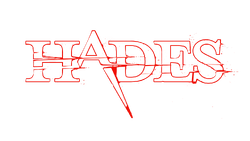
| |
| Developer(s) | Supergiant Games |
| Publisher(s) | Supergiant Games |
| Genre(s) | Roguelike Action role-playing |
| Console/platform of origin | macOS Nintendo Switch Microsoft Windows |
| First installment | Hades (2020) |
| Latest installment | Hades (2020) |
Hades is a roguelike game created by Supergiant Games that focuses on Zagreus, the son of Hades, who repeatedly attempts to escape the Underworld. The game takes major inspiration from Greek mythology, using many characters and weapons.
Zagreus was added as a spirit in Ultimate via the Sentinels, Gods, and Baseball Spirit Board event in January of 2024. His spirit does not list the name of the series he originates from, nor is it referenced by name in the event announcement.
River City[edit]
| River City (universe) | |
|---|---|
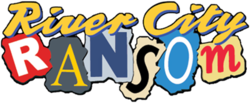
| |
| Developer(s) | Technōs Japan Atlus Arc System Works |
| Publisher(s) | Taito Technōs Japan Atlus Arc System Works |
| Genre(s) | Beat 'em up Sports |
| Console/platform of origin | Arcade |
| First installment | Renegade (1986) |
| Latest installment | River City Saga: Three Kingdoms Next (2024) |
River City (くにおくん, Kunio-kun) is a beat 'em up and sports game series made by Technōs Japan, which is now handled by Arc System Works. The series stars the titular Kunio (known as Alex in River City Ransom, the Western localization of Downtown Nekketsu Monogatari), beating his way through dangerous gangs or competing in sports, often joined by his friendly rival Riki (Ryan in River City Ransom).
Four spirits from the River City franchise were added via Spirit Board event River City Smash in Super Smash Bros. Ultimate. The event started on January 24th, 2020 and ended on January 28th of the same year. Notably, the characters appear with their original Japanese names and appearances across all versions rather than using their localized names.
Nintendo World Cup, a localised release of Nekketsu High School Dodgeball Club: Soccer, is namedropped in the Brawl Chronicle.
Shantae[edit]
| Shantae (universe) | |
|---|---|
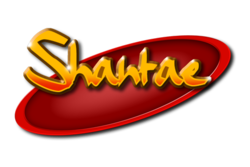
| |
| Developer(s) | WayForward Technologies |
| Publisher(s) | Capcom WayForward Technologies |
| Genre(s) | Platformer Metroidvania |
| Console/platform of origin | Game Boy Color |
| First installment | Shantae (2002) |
| Latest installment | Shantae and the Seven Sirens (2019) |
Shantae (シャンティ, Shantae) is a series of action platformers developed by WayForward Technologies that star the titular character, Shantae, a half-genie half-human girl who can use her long hair to attack enemies, unlock new abilities and weapons with progression, and transform into different animals by belly dancing.
Both the protagonist and recurring antagonist of the series, Shantae and Risky Boots respectively, appear as spirits in Super Smash Bros. Ultimate using their artwork from the fourth installment, Shantae: Half-Genie Hero. A Shantae Mii Costume for Mii Brawlers would later be released through DLC, bundled with the music track Burning Town, in its arrangement from Half-Genie Hero.
Tetris[edit]
| Tetris (universe) | |
|---|---|

| |
| Developer(s) | Alexey Pajitnov Various |
| Publisher(s) | The Tetris Company Nintendo Various |
| Genre(s) | Puzzle |
| Console/platform of origin | Electronika 60 |
| First installment | Tetris (1984) |
| Latest installment | Tetris Forever (2024) |
| Article on Hard Drop Tetris Wiki | Tetris (universe) |
Tetris (テトリス, Tetris; Тетрис in Russian) is a tile-matching puzzle video game series created by Alexey Pajitnov that released on various consoles over the years. It is perhaps most famous for its iteration on the original Game Boy, which was a pack-in title for the handheld, and propelled it to instant commercial and critical success.
Both Tetris: Type A and Tetris: Type B from the Game Boy version appear in Super Smash Bros. Brawl as music for the Luigi's Mansion stage.
Tetris: Type A returns in Super Smash Bros. for Nintendo 3DS, but only as a track for Smash Run. In Super Smash Bros. for Wii U, both tracks reappear. While Tetris: Type A still plays in the Luigi's Mansion stage like in Super Smash Bros. Brawl, Tetris: Type B is moved to the Wuhu Island stage.
Tetris: Type A and Tetris: Type B both return in Super Smash Bros. Ultimate, now playing on stages with music listed in the "Other" and, as of version 8.1.0, "Super Smash Bros." categories. Five spirits depicting different Tetrimino shapes were also added via the Attack of the Tetriminos! Spirit Board event. The singular spirits include the I, T, and O shapes, while shared spirits include the S & Z shapes and the L & J shapes.
The Tower[edit]
| The Tower (universe) | |
|---|---|
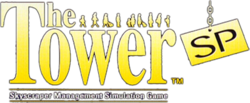
| |
| Developer(s) | OPeNBooK Vivarium |
| Publisher(s) | OPeNBooK Maxis Nintendo Sega |
| Genre(s) | Construction and Management simulation |
| Console/platform of origin | Macintosh System 7 |
| First installment | SimTower: The Vertical Empire (1994) |
| Latest installment | The Tower for iPhone (2011) |
The Tower (ザ・タワー, The Tower) is a series of construction and management simulator games in which the player builds and manages the operations of a modern, multi-use skyscraper. The North American release of the first game, The Tower, was localized by Maxis as a part of the Sim series, titled SimTower: The Vertical Empire.
Yama, the boss from the Game Boy Advance installment, The Tower SP, appears as a spirit in Super Smash Bros. Ultimate.
Undertale[edit]
| Undertale (universe) | |
|---|---|
| Developer(s) | Toby Fox 8-4 |
| Publisher(s) | Toby Fox 8-4 |
| Genre(s) | Role-playing |
| Console/platform of origin | Microsoft Windows Apple OS X |
| First installment | Undertale (2015) |
| Latest installment | Deltarune (2018) |
Undertale, officially stylized as UNDERTALE, is an indie role-playing game created by Toby Fox. In the game, the player traverses an underground world full of quirky monsters and can either befriend or murder them, with different choices resulting in different endings.
One of the major characters encountered, Sans, appears as a downloadable Mii Gunner costume in Super Smash Bros. Ultimate as part of Round 3. The costume also comes with a new arrangement of his boss theme MEGALOVANIA as a DLC music track, playing on stages with music listed in the "Other" and, as of version 8.1.0, "Super Smash Bros." categories.
Warframe[edit]
| Warframe (universe) | |
|---|---|

| |
| Developer(s) | Digital Extremes Panic Button |
| Publisher(s) | Digital Extremes |
| Genre(s) | Third-person shooter Action role-playing |
| Console/platform of origin | Microsoft Windows |
| First installment | Warframe (2013) |
| Latest installment | Warframe (2013) |
Warframe is a free-to-play cooperative third-person shooter/action role-playing game made by Digital Extremes. It follows a member of the Tenno, an ancient warrior race, who awakens from a millennia-long cryosleep to find their planetary system at war. The Tenno use bio-mechanical suits, the eponymous Warframes, along with various weapons to fight their enemies. Opposing them are the militaristic Grineer Empire, the plutocratic Corpus mercantile, the techno-organic Infested, and their archenemies—the self-replicating Sentient machines—all of which stem in some way from the decadence of the ancient Orokin Empire.
The player's guide, the Lotus, and her Sentient form Natah both appear as spirits in Super Smash Bros. Ultimate, released in the spirit event Spirits in Black.
The Wonderful 101[edit]
| The Wonderful 101 (universe) | |
|---|---|

| |
| Developer(s) | PlatinumGames |
| Publisher(s) | Nintendo PlatinumGames |
| Genre(s) | Action-adventure |
| Console/platform of origin | Wii U |
| First installment | The Wonderful 101 (2013) |
| Latest installment | The Wonderful 101: Remastered (2020) |
The Wonderful 101 (ザ・ワンダフル・ワン・オー・ワン, The Wonderful 101) is an action game developed by PlatinumGames. Players take control of a team of masked superheroes, known as the Wonderful 100 (pronounced One-Double Oh), to save Earth from GEATHJERK, a legion of alien invaders. By using the stylus (or right stick) to draw shapes, the player can have the heroes join together to assume a variety of forms known as "Unite Morphs" to combat enemies and solve puzzles. Nintendo published the game in its initial Wii U-exclusive release, while its remaster was published on multiple platforms by developer PlatinumGames themselves. PlatinumGames fully acquired the intellectual property rights from Nintendo in September of 2024.
The main character, Wonder-Red, and the six other main Wonderful Ones all appear as trophies in Super Smash Bros. for Wii U. Two tracks from the game are also featured: ST01: Roll Out, Wonderful 100! plays on the Pilotwings stage, and Jergingha - Planet Destruction Form plays on the Mario Galaxy stage.
Wonder-Red and Wonder-Blue both return as spirits in Super Smash Bros. Ultimate. ST01: Roll Out, Wonderful 100! and Jergingha - Planet Destruction Form both return, now playing on stages with music listed in the "Other" and, as of version 8.1.0, "Super Smash Bros." categories.
Dependent universes[edit]
Dependent universes are universes that are only represented in the Super Smash Bros. franchise through technicalities and in ways too minor to be considered their own series.
- Anarchy Reigns is an open world beat 'em up game developed by PlatinumGames and published by Sega. The fighter spirit artwork of Bayonetta from the first Bayonetta game, as well as some of her alternate costumes, come from this game.
- Dance Dance Revolution is a series of dance rhythm games by Konami and one of many franchises developed by the company's music division, Bemani. A sticker of Bowser uses artwork from Dance Dance Revolution: Mario Mix. Mario's down smash in Ultimate also resembles his breakdancing on that game's cover art, as opposed to just his leg sweep from Super Mario 64 as it was prior.
- Ehrgeiz is a 3D arena fighting game made by DreamFactory, developer of the Tobal series, and released jointly by Square and Namco in December 1998. It featured characters from Final Fantasy VII like Cloud and Sephiroth as guest fighters. Some of Cloud's and Sephiroth's moves (which also may have been borrowed from the Tekken and Tobal games due to Ehrgeiz reusing a lot of animations from those games), such as their down tilts and Sephiroth's forward smash, originated from this game. The animation of the last three hits of Cross Slash is based on its animation from this game.
- Final Fight is a series of beat-em-up games made by Capcom. The series is a spinoff of Street Fighter, hence why Cody Travers, one of the series' protagonists, appears as a playable character in several Street Fighter games and receives a spirit in Ultimate, referencing his appearance in Street Fighter Alpha 3.
- Flicky is an arcade platformer released by Sega whose titular protagonist would later become one of the recurring Animals in the Sonic the Hedgehog series. Flicky appears in the background of Windy Hill Zone and as part of the Fauna of Windy Hill Zone trophy in Super Smash Bros. for Wii U.
- Jet Set Radio is a series of extreme sports platformers developed by SmileBit, an in-house studio of SEGA. The song "Right There, Ride On" samples Rock It On from the first game, as confirmed by the song's composer, Hideki Naganuma, on Twitter.[2]
- Marvel vs. Capcom is a fighting game series featuring characters owned by Capcom and Marvel Comics. Mega Man's up tilt is based on the Mega Upper from this series,[3] and Ken Masters' Shinryuken is based on its incarnation from this series,[4] although neither originate from the series. The series is also indirectly referenced by Palutena's Guidance in the conversation about Ryu.
- Meteos is a series of puzzle games developed by Masahiro Sakurai and originally released for the Nintendo DS. The X Bomb's behavior in the Super Smash Bros. series is similar to that of the item of the same name in Meteos, in which it explodes in a cross shape rather than exhibit its behavior from Kid Icarus: Uprising.
- Michael Jackson's Moonwalker is the name of several video games based on the 1988 Michael Jackson film Moonwalker. Sega developed two beat 'em ups, released in 1990; one released in arcades and another released for the Sega Genesis and Master System consoles. The Wii Remote selection sound used for Sonic first appeared in the Genesis version of Moonwalker before being reused in the 16-bit version of Sonic the Hedgehog.
- Mickey Mouse is the mascot franchise of The Walt Disney Company. While most of the pre-existing Disney material featured in Kingdom Hearts is not referenced in Super Smash Bros., the keychain on Sora's Keyblade still bears the signature tri-circle Hidden Mickey logo. Several video games starring Mickey Mouse are also listed in the Chronicle.
- Pulseman is a platformer game developed by Game Freak for the Sega Mega Drive. The Pokémon franchise has multiple references to Pulseman. One of these is Volt Tackle which is based on Pulseman's signature attack Voltekka,[5] sharing the same name in Japanese.
- Sid Meier's Pirates! is a pirate-based strategy game originally developed by MicroProse for a selection of computer platforms. The opening of the final boss theme from Donkey Kong Country, featured in the songs "King K. Rool / Ship Deck 2", "Snakey Chantey", and "Gangplank Galleon", is taken from Rare's NES conversion of the game, which was also composed by David Wise.
- Shin Megami Tensei is a post-apocalyptic RPG series and the successor of the Digital Devil Story: Megami Tensei duology, made by Atlus. Persona is one of many sub-series from this franchise. The Tsubasa Oribe and Tsubasa Oribe (Carnage Form) spirits in Ultimate originate from Tokyo Mirage Sessions ♯FE, a pop idol-themed crossover between Shin Megami Tensei and Fire Emblem. Joker's down special moves, Tetrakarn and Makarakarn, first appeared in 1992's Shin Megami Tensei for the Super Famicom.
- Strider is a platform/hack-and-slash series developed by Capcom based on a manga created by Moto Kikaku starring the ninja Strider Hiryu. The Robot Master weapon that Mega Man uses for his back air is the Slash Claw from Mega Man 7, whose attack is based on how Strider attacks in his games.[6]
- Warriors is a hack-and-slash series by Omega Force (stylized as ω-Force) and Koei Tecmo (previously Koei prior to their merger with Tecmo). Originally a spin-off to Koei's Romance of the Three Kingdoms series titled Dynasty Warriors, the game would spawn an entire sub-series of games under the Warriors title or otherwise have the same type of gameplay. While the first game in the series is a one-on-one fighting game, its sequels and spin-offs adopted the style of the player controlling several generals on an open map and mowing down hordes of enemies while simultaneously managing the positions and actions of allied forces until the enemy has fallen or surrendered. The franchise includes crossovers such as Dragon Quest, The Legend of Zelda, Fire Emblem, and Persona. Spirits from Hyrule Warriors: Age of Calamity appeared in Ultimate via a Spirit Board event. Additionally, Sophia from Persona 5 Strikers, a Persona 5 spin-off, is available as a spirit for those who have save data from the game in the system. She would be available to purchase from the Shop as of version 12.0.0.
- Yume Kōjō '87 (lit. "Dream Factory '87") was a promotional event held by Fuji TV in 1987 in Japan. Yume Kōjō: Doki Doki Panic is a game featuring the mascots of this event, which was localized as Super Mario Bros. 2 and eventually re-localized back to Japanese as Super Mario USA. Mushroom Kingdom II is based on the Super Mario All-Stars version of the game, and characters from the game such as Birdo, Pidgit and Shy Guy have appeared in various forms as parts of the Mario and, in some cases for Shy Guy, Yoshi universes, In fact, Birdo and Shy Guy's Trophies in Smash 4 mention the game sans Yume Kōjō '87. Additionally, Lina's floating jump, a special ability which was then inherited for Peach in Super Mario Bros. 2, appears as a mechanic for Peach since her debut in Melee, also being inherited for Daisy in Ultimate.
References[edit]
- ^ https://www.denofgeek.com/games/mappy-namcos-forgotten-follow-up-to-pac-man/
- ^ https://twitter.com/Hideki_Naganuma/status/506068295582109696
- ^ https://youtu.be/7xUWnQu2Grs?t=1726
- ^ https://youtu.be/fccgHnBQ0YM?t=270
- ^ GAME FREAK Illustration Demonstration: Episode One [Ken Sugimori x Pulseman 【#ゲームフリーク ひみつきち#9】]. ゲームフリーク公式チャンネル (2019-01-11). Retrieved on 2024-01-06. ““Pulseman's” “Volteccer” comes up in the “Pokémon” series as “Volt tackle”, and “S.S. Anne” comes from the name of the host computer “Saint Anne”. So the designs aren’t the only way the two games are connected. That’s true.”
- ^ Rockman 7. Capcom. Retrieved on 2024-01-07. “With this Slash Claw, I can slice through anything. Incredible dasu. It's like SXrXder HXyuu dasu! Promise you won't say that again”